LICIO GELLI, THE MAN WITH THE POWER TO KILL A POPE
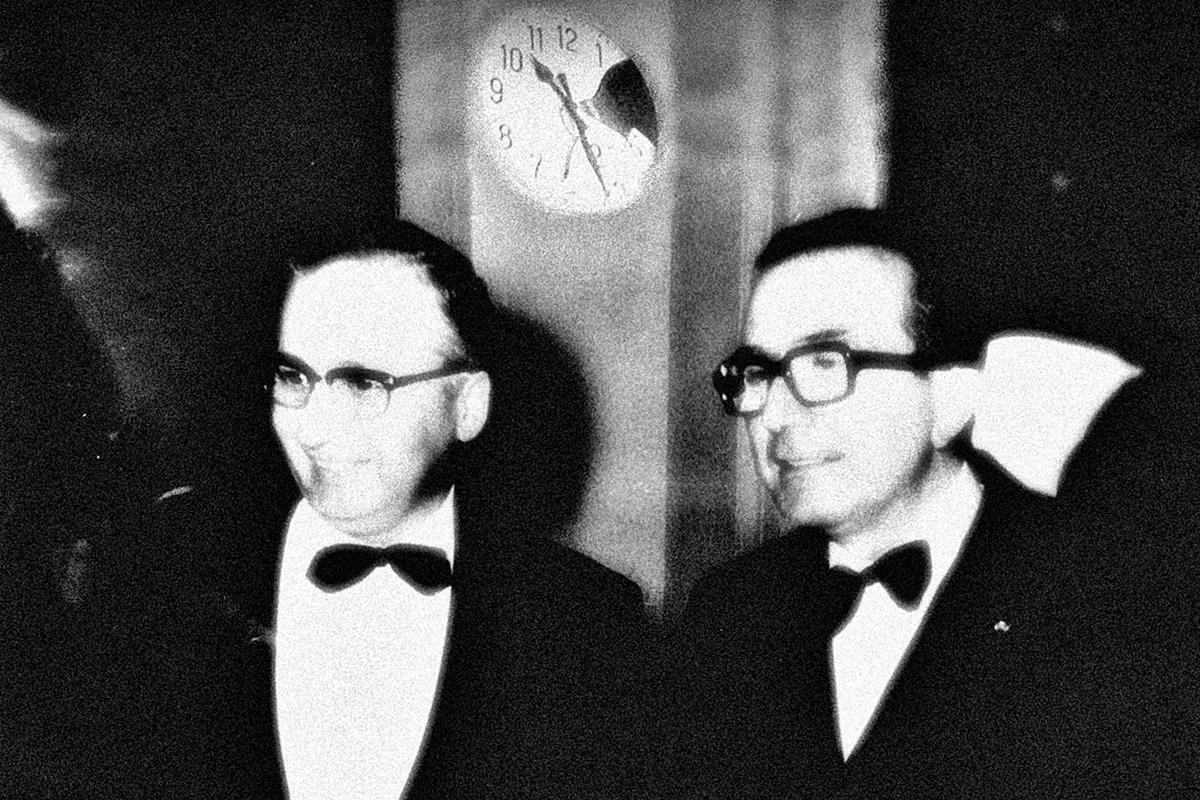
Forty-one years have passed since the morning when the body of banker Roberto Calvi was found hanging from the Black Friars bridge in London. It then took decades to prove that it was murder and not suicide. Certainly it is yet another tragic death in a group of people who, out of their own ambition and under pressure from the US federal government, which tried in every possible way to control the democratic life of Italy, were destroyed by the very millstone they had oiled.
It started with Enrico Mattei, the dreamer who had brought ENI to be one of the greatest oil powers on the planet. Then came the massacre of the servants of the State (first and foremost Giovanni Falcone, Paolo Borsellino, General Dalla Chiesa) who had opposed the agreement between Washington and the Sicilian Mafia, but also the assassination of many Mafiosi, and even of the banker of the gangs, Michele Sindona, killed in prison with a poisoned coffee, and some Christian Democrat politicians who had been part of those underworld agreements.
Journalists died – some heroes, like Peppino Impastato and Giuseppe Fava, others an integral part of the agreement, like Mino Pecorelli – and also ordinary people, torn apart by bombs in Brescia, Milan, Bologna, the Italicus train, the flight over Ustica. The probable most important victim, although it will never be proven, was Pope John Paul I, unwillingly involved in the gang war that was measured in the conquest and destruction of the Italian banking system. Behind all this, for a very long time, there was only one man, the freemason Licio Gelli. One who survived the massacre, but ended his days in loneliness and anguish. One who used the military force of first Nazi Germany, and then the United States; one who went around all parties, later becoming an occult party himself, with a project to ‘redefine democracy’ that would later be largely transformed into reality by one of his followers, the Milanese real estate developer Silvio Berlusconi.
Telling in a few pages what we now know about Gelli, and what was still secret only ten years ago, is a difficult task, not least because it involves the analysis of thousands of banking transactions of Banco Ambrosiano, the institution directed by Roberto Calvi, which kept Gelli’s immense power machine on its feet, financed his alliance with the Vatican, Opus Dei, the Mafia and some leading politicians, and which imploded also because of the greed of Gelli and people close to him. What we make in these pages is an attempt, which must necessarily pass through Freemasonry and the life of the young Gelli.
Freemasonry
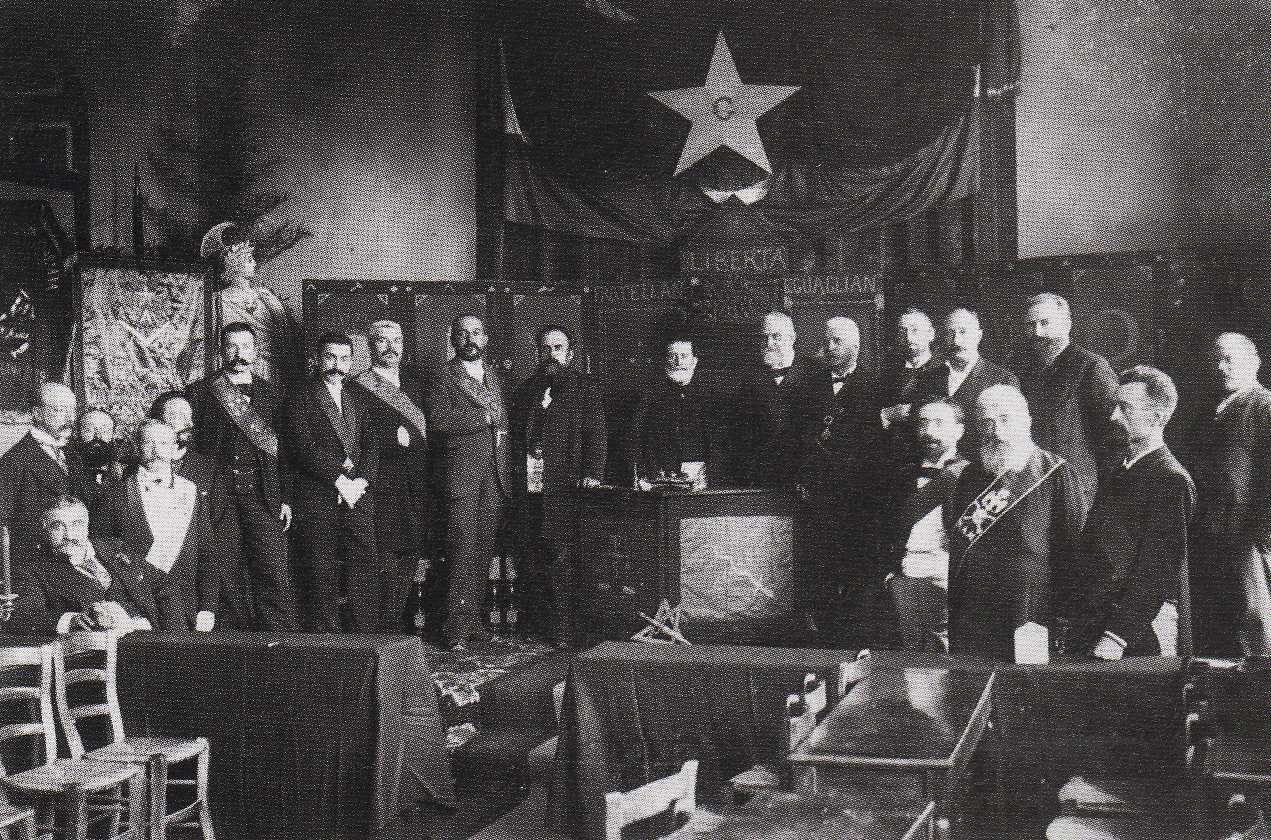
March 1888: the heads of Freemasonry of what until a few years before was the State of the Church, which had declared all-out war on the Lodges, meet in a Rome basement[1]
“More than a century of experience demonstrates and confirms the validity and accuracy of the ancient maxim: “Silence is golden”, a maxim that assumes particular value when referred to an organism – to which, under the observance of well-defined essential rules, one has free and spontaneous access – characterised by absolute confidentiality”. (Norms of the Masonic Lodge Propaganda 2: excerpt).
On 17 March 1981, the day on which the search took place to reveal to the world the existence of the P2 lodge and the names of some of its members, its pervasiveness was already known in investigative circles. High representatives of the police corps, the armed forces and the judiciary are suspected of serving subjects other than the State[2] . That day, magistrates Giuliano Turone and Gherardo Colombo, engaged in an investigation into the affairs and fake kidnapping of Michele Sindona, ordered the Guardia di Finanza to carry out simultaneous searches in a villa in Arezzo and in the offices of a textile factory in Castiglion Fibocchi, a municipality 15 kilometres from the Tuscan capital.
The two arrange for the operation to be carried out in absolute secrecy by men from the Italian Armed Forces with whom they have worked in the past and of proven faith in the Republic, without therefore informing the local commands in advance. The papers seized during the searches reveal, among other things, a list of 962 people belonging to the P2 Masonic lodge, including military personnel, politicians, journalists, entrepreneurs, magistrates and prefects. The villa in Arezzo has the name of a woman, Wanda, the company in Castiglion Fibocchi is Giole. Both are linked to one person: Licio Gelli, the Grand Master of the lodge[3] . He is 62 years old and one of the most powerful men in Italy, although he is practically unknown to the majority of the population. He has an adventurous and murky history behind him, characterised by excellent organisational and interpersonal skills as well as a great ease in changing sides and carrying out or favouring abhorrent actions.
The years of fascism
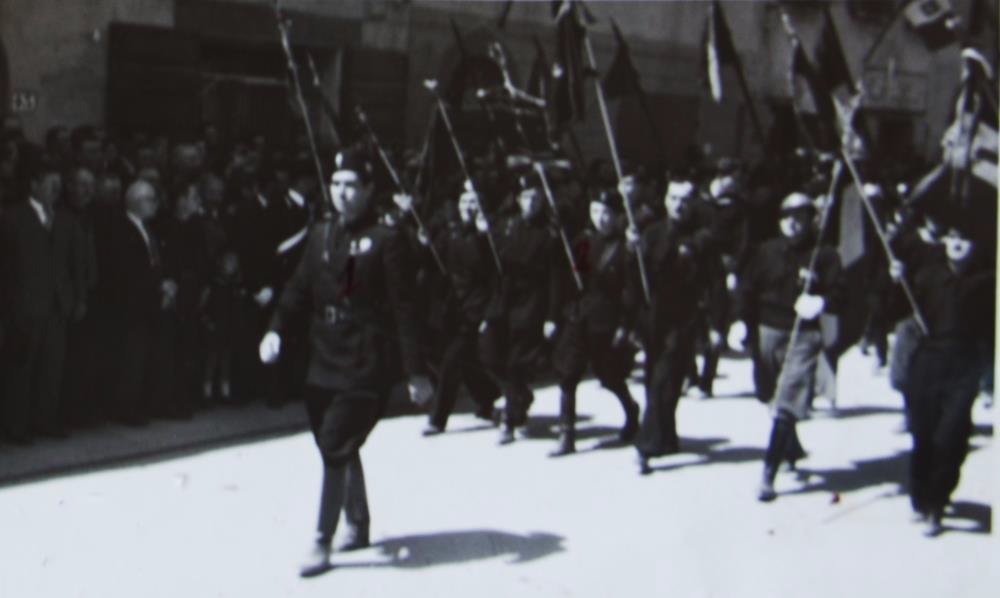
November 1920: first fascist demonstrations in Pistoia. Gelli is just over a year old[4]
Licio Gelli was born in Pistoia on 21 April 1919; convinced fascist, at the age of seventeen he enrolled as a volunteer – although he had not reached the minimum age required – to take part in the Spanish Civil War together with his older brother Raffaello; when the latter died in battle, Gelli was repatriated and, a few months later, was decorated by Benito Mussolini as the youngest legionnaire employed in the Spanish campaign[5] . His triumphant reception in Pistoia earned him a position as orderly in the local GUF (Gioventù Universitaria Fascista) headquarters, of which he soon became the coordinator – although he only had an elementary school leaving certificate[6] .
In 1940 he published the memoir “Fuoco!” (Fire!), dedicated to the exploits of the Spanish Civil War; a copy of the book, sent to the Duce, procured him the appointment – on 23 April 1941 – of inspector for the Organisation of the Fasci di Combattimento Abroad, with destination Bocche di Cattaro[7] . After failing his high school graduation exam in accountancy, where he entered as a private student[8] , Gelli left for Cattaro, a small coastal town in southern Yugoslavia, where he arrived in 1942, called by Luigi Alzona, the local prefect and former federal of Pistoia. Italy had been at war since June 1940 on the side of Germany which, in April 1941, began bombing Belgrade, forcing the Yugoslav royal family to transfer the gold reserves of the national bank, the crown’s treasure and the assets of ministers and generals to Kotor.
With Italy about to occupy Montenegro, the Yugoslavs hide most of the National Bank’s 60 tonnes of gold bars, two tonnes of ancient coins and millions of dollars and pounds sterling in a cave near the town[9] . The Italians manage to get possession of it, but are blocked by the British, who are guarding the Inlet Mouths, suspecting that the treasure is in enemy hands. According to other sources, the gold was stolen by Military Information Service (SIM) agents directly from the Yugoslav National Bank in Belgrade and then transferred to Cattaro[10] . In any case, Gelli, then factotum of Piero Parini, secretary general of the Italian fasci abroad, is said to have been among the inventors of an ingenious ploy to transport the loot to Italy: hiding it inside a hospital-train carrying infected patients[11] .
The convoy arrived in Trieste. But in 1947, when, at the request of the Yugoslav government, the Bank of Italy returned the treasure to Belgrade, twenty tons of gold bars were missing; it is possible that Gelli, one of the creators and executors of the plan, may have embezzled that capital, which would form the basis for the development of Gelli’s future activities. In support of this hypothesis, there are several seizures of gold against him: ten bars in Buenos Aires in 1983, 250 kilos in some Geneva banks, 164 kilos found in Villa Wanda in September 1998, bearing stamps that would attest to their provenance from Eastern European countries[12] . Much of the stolen treasure would have been transferred to Argentina soon after the end of the war[13] .
Back home, Gelli witnessed the fall of the fascist government and the birth of the Republic of Salò, which he joined. He returned to Pistoia as an emissary of the Germans, informally initiating the process of reconciliation between fascists and anti-fascists: between September and October 1943, he organised several meetings with communist exponents. The attempt at dialogue with the National Liberation Committee in Pistoia foundered due to Rome’s intervention, but allowed Gelli to forge relations with some partisans and the anarchist Silvano Fedi. From then on, until the spring of 1944, he acts as a perfect double agent: on several occasions, disguised as a fugitive soldier, he wanders the mountains surrounding Pistoia, going from farmstead to farmstead in search of information on partisan hideouts. He then returned to the valley, in the direction of the house of his sister, wife of the communist Gino Fedi, who would later report to the communist Giuseppe Corsini, warning him that the Germans were preparing to round up a partisan formation spotted in the mountains[14] .
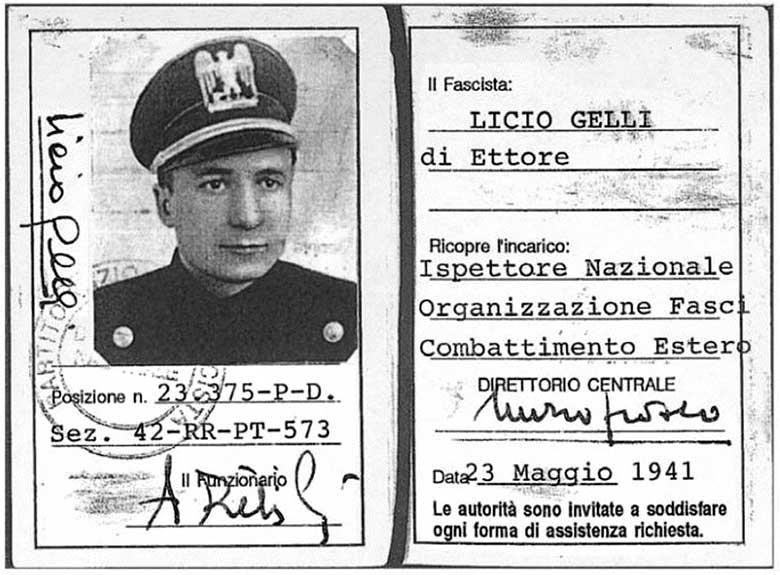
Licio Gelli’s fascist card [15]
After returning to the barracks and putting his clothes back on, Gelli reports to the Germans that he has spotted a partisan hideout in the mountains: twice Gelli himself takes part in the ensuing raids, which end, needless to say, in a deadlock. After four failed raids, it is Gelli himself who organises an extraordinary meeting to try to locate the partisan spy (i.e.: himself)[16] . Gelli then manages to fool Nazis, fascists and partisans (saving more than a few, among the latter) until the Villa Sbertoli operation: on the morning of 26 June 1944, Gelli and some partisans, disguised as fascist soldiers, free fifty-four political prisoners from the mental hygiene institute, transformed into a prison after the allied bombing of Arezzo between October ’43 and January ’44[17] .
After this action, Gelli goes into hiding with some food, cigarettes and 40,000 lire in his pocket. He reappears in Pistoia, at his home in Via Erbosa 7, after the city’s liberation in September 1944. Having escaped death at the hands of some partisans thanks to the aforementioned exploits, Gelli was summoned by the command of the Fifth Army of the CIC (Counter Intelligence Corps), the United States military counter-espionage agency, headed by the head of the Office of Strategic Services (OSS) in Italy, James Jesus Angleton[18] . A philofascist, Angleton is one of the architects of post-World War II Italian politics. Like many of his contemporaries, he fears the possible advance of the PCI more than anything else; in order to nip in the bud the possibility of a widening consensus for communists and socialists in Italy, Angleton has been continuously searching, since 1944, for fascists capable of leading or participating in military campaigns or to be enlisted in counter-espionage.
With this aim, he rescued the pro-fascist officer Junio Valerio Borghese, already in the hands of the Milanese partisans, in May 1945, by having him escape to Rome disguised as a US officer. Borghese became part of a network that enjoyed immunity for crimes previously committed, putting himself at the service of the OSS and, later, the CIA, and forming the backbone of a real dormant militia but ready for action: the Stay Behind network, of which Gladio is the Italian declination[19] . Angleton was the right man, spoke the language fluently, and became the head of the Italian CIA, before returning to the United States, where he directed counter-espionage under directors Allen Dulles and Richard Helms[20] , who also coordinated Henry Kissinger’s espionage activities in Germany and Switzerland[21] . Gelli’s mission, as a member of the CIC, is to identify former comrades, among them Guido Checcoli[22] ; he also serves the US intelligence cause as a whistleblower, denouncing members of the ‘Ettore Muti’ Legion[23] .
Following the actions in favour of the partisans, the president of the Pistoia CLN, Italo Carobbi, signed a safe-conduct for Gelli that allowed him to circulate undisturbed on national soil. It is 2 October 1944[24] . The CIC allows him to escape to Sardinia – where a sister lives – which he can reach by means of a travel permit issued by the Carabinieri[25] . At La Maddalena, Gelli was arrested in June 1945, providing during interrogation a list of 56 people collaborating with the Nazis (including Giorgio Pisanò, then a university student, later a senator of the MSI and a member of the Parliamentary Commission of Inquiry into the P2 lodge), declaring himself available for further collaboration with the Italian secret services[26] . Thanks to yet another denunciation, Gelli was released the same day, despite a two-year and six-month sentence hanging over his head for kidnapping and theft, handed down by the Court of Pistoia in April of that year[27] .

8 September 1944: the partisans of the National Liberation Committees enter Pistoia[28]
On the following 9 July, he was again interrogated by the Italian Counter-Intelligence, to whom he provided further information about his past, also in order to assess his employment in the national spy network[29] . In the autumn of 1945, he was once again taken to various prisons, which acted as transfer stations before entering his destination centre: Pistoia. In one of these temporary stays, in Rome, Gelli was a cellmate of Junio Valerio Borghese for fifteen days[30] . In March 1946, he was granted bail pending his acquittal from charges in the Pistoia trial, which came six months later. Another case remains pending: his denunciation to the Germans allegedly caused the deportation of an Italian Air Force lieutenant colonel, accused by Gelli of hiding material from the Nazis. The affair continued until the Togliatti amnesty of June 1946, which cleansed Gelli’s criminal record and relieved him of all responsibility for his accuser[31] .
In the post-war period, Gelli, married and with a dependent child, ran his father-in-law’s stall at the Pistoia market, but was sentenced in 1949 to pay a fine for smuggling cigarettes and evasion of the General Revenue Tax[32] . Leaving the stall to open first a company for the production of drawn iron and then a bookshop, Gelli tried to obtain a passport: a police report for the SIFAR in 1950 describes Gelli’s espionage activities in the service of the Communists – his activities as an industrialist first and a bookseller later would only be covers. The report describes how he, unable to obtain a passport because he was considered a dangerous fascist, would set up the company in order to apply for the document for commercial purposes[33] .
After being refused by the Pistoia Police Headquarters, Gelli tried to obtain the intercession of the DC and the Monarchist Party, before enrolling in the MSI, in whose directorate Orfeo Sellani, Gelli’s old principal in the days of fascism, worked: the passport arrives, finally[34] , allowing the future Venerable to move around Europe (Spain, France, Belgium, Switzerland) and Argentina, where he is preparing to invest the enormous fortune embezzled from the Yugoslav crown a few years earlier, with the approval of the United States, of which he is still an informer. The protagonists of Gelli’s speculations were, in the future, Umberto Ortolani and Giampietro Pellegrini, former finance minister of the Social Republic. Other Fascists, besides Pellegrini, landed on Argentinean soil between 1947 and 1948: Eduardo Moroni (Minister of Agriculture and Forestry); Giuseppe Spinelli (Minister of Labour); Vittorio Mussolini, son of the Duce, who founded the magazine “Risorgimento” together with Gaio Gradenigo, former officer of the GNR (Republican National Guard) and leader of the Republic of Salò – already in South America for two years[35] .
Moroni, Mussolini, former quadrumvir Cesare Maria De Vecchi, Carlo Sforza and others were on the list of financiers of the young Italian Social Movement according to a dossier published in 1949 by the Argentine Socialist Party[36] . Two agents of the SOE (Special Operation Service), the British secret service, arrived in Buenos Aires to nab Gelli and interrogate him in relation to the events in Cattaro, forcing him to make a hasty return to Italy. Gelli’s Argentinean preference can be explained by his relations with the then president Juan Domingo Perón, a fascist sympathiser; the two met in 1939, during a visit by the Argentinean leader to Rome[37] .
There is another character who would link Peron to Gelli: Otto Skorzeny, former Nazi hierarch and spy, protagonist of the liberation of Mussolini at Campo Imperatore, in the Abruzzo Apennines, after the fall of the fascist regime and the Duce’s arrest. Skorzeny and Gelli would both be employed in Operation Oak (12 September 1943), the first act in the development of a network at the service of the Americans involving the OSS (and therefore the CIC, the first US body at which Skorzeny worked, at the same time as Henry Kissinger, stationed in Germany[38] ), and the SIS (Special Intelligence Service)[39] , the FBI’s counter-espionage department operating in Europe and South America with the task of monitoring, above all, Nazi or pro-Nazi activities in Central and South America[40] .
Skorzeny, recruited by the CIC, comes into contact with James Angleton, head of the OSS and in charge of a plan to eradicate elements belonging to or belonging to the dying regime[41] . Angleton supervised the birth of numerous neo-fascist organisations, in some cases entrusting Borghese’s X Mas with the task of training their members in military action; Nino Buttazzoni (head of the RSI Parachutist Swimmers) is recruited by Angleton as an undercover agent in charge of founding one of these organisations, called the Anti-Communist Clandestine Army, while Pino Romualdi (deputy secretary of the Republican Fascist Party and founder of the MSI[42] ) works on the birth of the Italian Anti-Bolshevik Front.
Reinventing oneself after the war
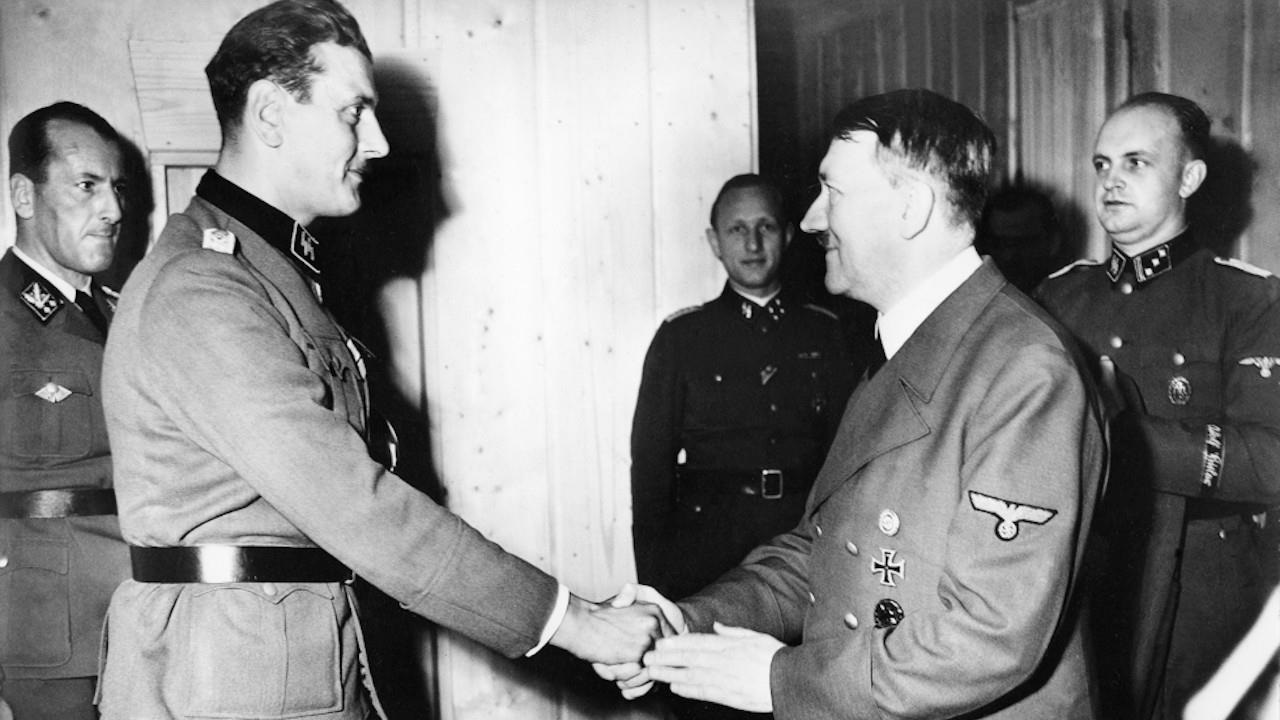
March 1943: Otto Skorzeny (left) became one of the closest men to Adolf Hitler (right)[43]
In the programme manifesto of the organisation, Romualdi makes explicit reference to the strategic communion of intent between neo-fascists and the United States against the common red enemy, delegating to the USA the task of dealing with the political question[44] . Other groups, such as the Fasci d’azione rivoluzionaria – founded by Romualdi – were born with squadrist intentions, linked – like forty other organisations in Italy – with Skorzeny’s international neo-fascist network, which operated in Europe and Argentina on behalf of the US secret services after the end of World War II[45] . One of the main operations carried out by this cluster of organisations was to carry out Operation Odessa – i.e. the plan, prepared by Heinrich Himmler, to let as many Nazi hierarchs as possible escape to Latin America[46] .
In relation to the Odessa project, the role played by the Swiss banker François Genoud, an early Hitler follower, is fundamental[47] . Already in the second half of the 1930s, Genoud established international relations that proved to be strategic during the course of the second half of the 20th century in the areas of international neo-fascism and Arab terrorism, for instance through his meeting with the Grand Mufti of Jerusalem Al-Husseini in 1936, during a long diplomatic trip to the Middle East[48] . Thanks to his contacts in the Swiss banking world, Genoud managed to facilitate the escape of Nazis to South America but also to the Arab world[49] . After the war, Genoud introduced the Mufti to the Swiss parliamentarian Albert “Ahmed” Huber, who, until the end of the century, was Genoud’s man on the side of Palestine and the Islamic Brotherhood’s bank, Bank Al-Taqwa in Lugano, founded by Youssef Nada[50] .
In 1974, Lieutenant-Colonel of the Guardia di Finanza Luciano Rossi (the intelligence service of the Fiamme Gialle) drew up an information report on Gelli’s presence in the Pistoia provincial communist committee until 1956, when he moved to the Christian Democratic Party[51] . Before the closure of the bookshop in 1953 (an activity supervised by the SIFAR since 1950 as a place for the exchange of information between spies), he managed to become the secretary and factotum of the DC deputy Romolo Diecidue, bringing him as a dowry the use of his FIAT millecento (with which he was chauffeured), the votes of the old moderate comrades and, above all, his unparalleled zeal. In return, Gelli was introduced to the Roman milieu – knowing men of Christian Democrat power, first and foremost Giulio Andreotti – and to the world of religious organisations, Diecidue’s electoral base[52] .
After a few years, another DC deputy, Gerardo Bianchi, recommended him to Cavalier Giovanni Pofferi, the founder and owner of the first Italian spring mattress factory, Permaflex; Gelli solved the sales problems that the innovative company was experiencing, managing to place large orders for mattresses with those religious organisations that he had known at the time when he was secretary of Diecidue. The business took off and Pofferi decided to open a new factory; Gelli suggested moving away from Tuscany, to avoid having to hire other communists as workers, focusing on Frosinone, a docile Andreottian constituency that offered the possibility of subsidised loans from the Cassa per il Mezzogiorno[53] .
Thus, in 1965, in the presence of Cardinal Ottaviani, Defence Minister Giulio Andreotti and Mezzogiorno Minister Edgardo Lami Starnuti, the new Permaflex factory[54] was inaugurated. At the end of 1967, Gelli quarrelled with Pofferi and left his post as director of the Frosinone factory; he founded the competing company ‘Dormire’, which was unsuccessful but allowed him to come into contact with two important textile industrialists from Arezzo: the Lebole brothers. By virtue of this relationship, Gelli moved his Tuscan base from Pistoia to Arezzo, where he would live for the rest of his days[55] . Gelli was the mediator for the purchase of Lebole by ENI, becoming a partner in the new company ‘Gio-Le’ (Giovanni Lebole, the founder), which absorbed ‘Dormire’[56] . In addition, for their mediation activity, the Lebole family gave Gelli a large villa on the hill of Santa Maria delle Grazie, a few kilometres from the centre of Arezzo: he changed the name of the residence from villa Carla, as it was called at the time of the transfer, to villa Wanda, in honour of his wife. It is now 1968[57] .
On 6 November 1963, while still looking after the interests of Cavalier Pofferi, Gelli enrolled in the Gian Domenico Romagnosi Masonic Lodge, presided over by the Worshipful Master Bruzio Pirrongelli, lawyer[58] . After more than a year of waiting (perhaps to further investigate his fascist past), he received Masonic initiation[59] in January 1965. Gelli entered Freemasonry at a time of significant transformation, the work of a powerful man unknown to most: Frank Gigliotti. A Calabrese who emigrated to the USA in 1928, a former evangelical pastor, he was from 1941 to 1945 an agent of the OSS in Italy[60] . During that period, Gigliotti directed the ‘American Committee for Italian Democracy’, an organisation linked to the Order Sons of Italy in America, the oldest and most important Italo-American coven in the United States, accused of openly supporting fascism in the 1920s and 1930s[61] .
Gigliotti and Freemasonry
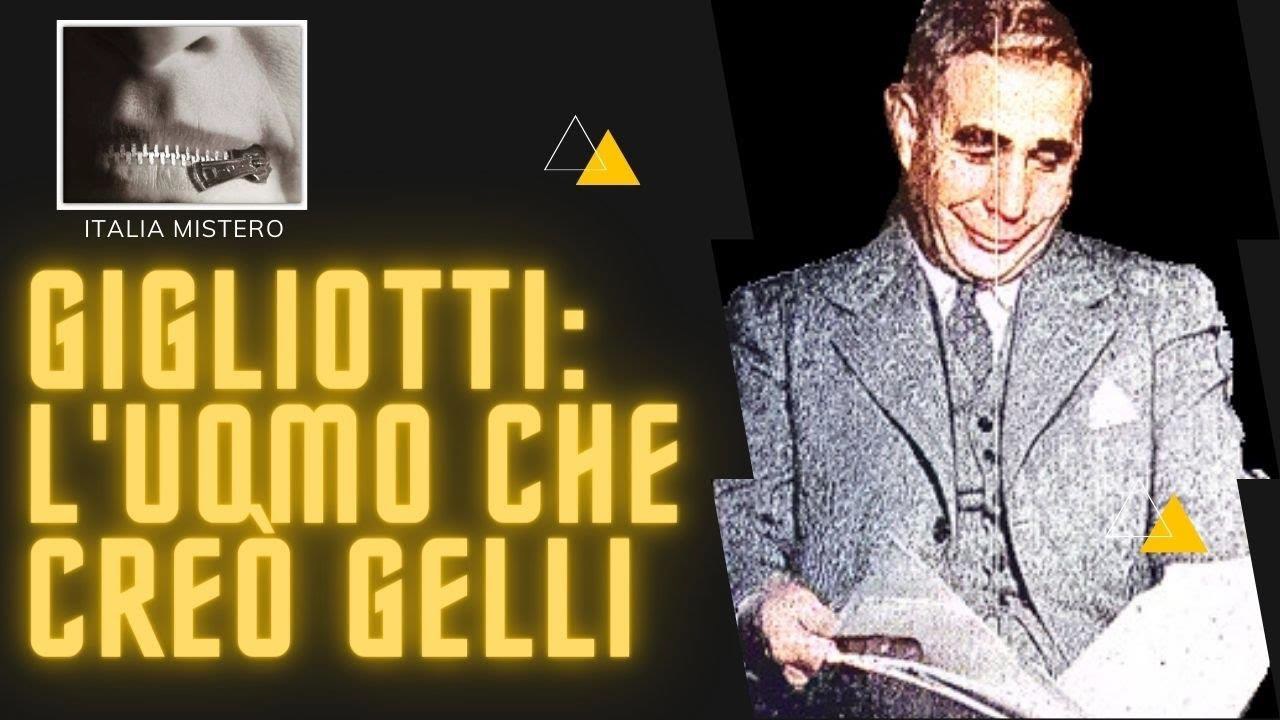
The theme song of the Italia Mistero documentary on Frank B. Gigliotti[62]
Associations belonging to the Order, whose ranks included Mafiosi, Freemasons and secret agents, were used to prepare the US landing in Italy; John Bowden Connally Jr., appointed Treasury Minister in 1971 by US President Richard Nixon, Sindona’s partner and Licio Gelli’s associate, took part in the operation[63] . By virtue of his experience, the Freemason Gigliotti became a CIA agent after the war. In 1947, he recognised the Grand Orient of Italy (GOI) and worked for the unification of Italian families, making the acquaintance of the Sicilian prince Giovanni Alliata di Montereale, a Freemason, whose name appears in the list of participants in the Borghese coup and in that of the Rosa dei Venti[64] .
Commissioned by a powerful Californian Masonic lodge, Gigliotti also worked to obtain the return to the Italian brothers of Palazzo Giustiniani, the historic seat of Freemasonry, confiscated by the fascist government following the forced dissolution of the organisation; on 7 July 1960, Finance Minister Giuseppe Trabucchi signed the agreement on the restitution of the building to the Grand Orient of Italy in front of Publio Cortini (Grand Master of the GOI from 1953 to 1957[65] ), in the presence of Frank Gigliotti and US Ambassador John Zellerbach[66] ; as a quid pro quo for his role in the operation and for the recognition of Italian Freemasonry, Gigliotti obtained, on behalf of US Freemasonry, permission to found US lodges in Italy, forcing Italian lodges to conform to the general guidelines coming from overseas.
In deference to the need to come to an agreement with the Church and Christian Democracy in an anti-communist function, Grand Master Giordano Gamberini (who succeeded Cortini in 1961[67] ) prohibits anticlericalism, a distinctive feature of Italian Freemasonry; over the years, many Masonic lodges formed by US civilian and military personnel are established from North to South[68] . When, in the mid-1960s, Gigliotti left the scene, Gelli began his own ascent within the Masonic hierarchies. In 1966, the Worshipful Master of the “Romagnosi” Pirrongelli introduced Gelli to the Grand Master of the Grand Orient, Roberto Ascarelli, who in August enthusiastically reported to Grand Master Gamberini on the fruitful proselytising activities carried out by the newly affiliated member, adding that he wanted to promote him to Master and introduce him into the Hod Lodge – an “intimate” cenacle in which Masonic culture was discussed – entrusting him with the Secretariat[69] .
By the end of 1966 Gelli was elevated to the rank of Master and his file transferred from the secretariat of the “Romagnosi” to that of the Grand Orient[70] . In Ascarelli’s study in Piazza di Spagna, where the meetings of the Hod took place, after Gelli’s arrival, other people, non-Masons, selected by him according to strict criteria of age and employment status, began to meet. This organisation, called the P2 Gelli Grouping, is parallel to the Grand Orient and is sometimes used by Gamberini to initiate some of the elements and insert them into the reserved lodge, the P2[71] , which Ascarelli oversees on behalf of the Grand Master. In 1967, Gelli himself was affiliated to P2 and instructed by Ascarelli and Gamberini to grow the lodge, whose control, however, remained in the hands of the Deputy Grand Master[72] .
The enrolment takes place according to practice, even if the initiations of the new ‘brothers’ take place with a summary rite, i.e. on the Grand Master’s own initiative, in contravention of Masonic practice without breaking any rules. In 1970, Roberto Ascarelli died and Giordano Gamberini was replaced in the role of Grand Master by the newly elected, Florentine doctor Lino Salvini: Gelli suddenly found himself in charge of the entire P2. Salvini is intent on expanding Freemasonry’s influence in the “profane” world, thus pushing for an increase in the number of members and seeking reunification with the “schismatic” Masonic obedience of the Grand Lodge of Italy[73] . Friction between Salvini and Gelli arose over the management of the P2, which the Grand Master did not look favourably upon because it was firmly in the hands of Gelli, whom he appointed Secretary of Organisation of the lodge in 1971; the latter succeeded in getting Salvini to approve some changes in the admission and management criteria, so that after a short time, he could introduce brothers from all over Italy, collect the capitation fees (membership and renewal of membership cards), and coordinate the work; nevertheless, without the knowledge of the Grand Master and outside of any rules, he initiated new brothers[74] .
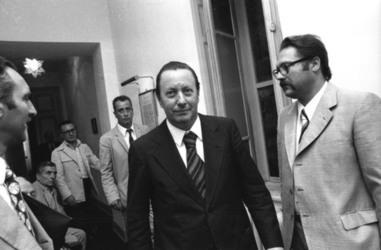
January 1973: Lino Salvini, founder and Grand Master of the P2 Lodge, an opponent of Licio Gelli in Freemasonry[75]
Salvini grants Gelli, while waiting to demolish the P2, a new headquarters in Via Condotti, in the centre of Rome, ‘covered’ by a Centre for the Study of Contemporary History[76] ; from 1973 Salvini himself starts new brothers motu proprio, keeping an account outside that of the Grand Orient, thinking he has found a balance between Gelli’s hyperbolic zeal and his own desire to maintain control over the P2[77] , which continues to grow at an unprecedented rate, including high-ranking military personnel. On the one hand, Salvini is attracted by the prospects that such a concentration of power can open up, on the other, he fears Gelli and his lodge, also in a subversive capacity[78] .
In 1974, the Grand Master realised that he had lost control of the P2, and therefore proposed its demolition and transformation into an open lodge. The vote on Salvini’s proposal, takes place in December 1974 in Naples, on the occasion of the Grand Lodge Festiva: the participants come out clearly in favour of the Grand Master. In order to proceed with the demolition – also ratified by the Executive Council – it is necessary to acquire the records and personal files of the members. After much resistance, Gelli agrees to hand over the material at the following Grand Lodge, in March 1975. Salvini accepts, giving Gelli the opportunity to prepare a dossier containing serious accusations against him, which is exhibited to the public of the Grand Lodge participants[79] .
Salvini, in order to see the charges dropped, must grant a new constitutive bubble to the P2 as an uncovered lodge, therefore regular, installing Licio Gelli as Worshipful Master. In this way, Gelli is recognised throughout the Masonic world as a high-ranking brother, with all the prestige and authority that this entails, while he continues to manage the P2 grouping in a totally autonomous manner, which can be likened more to a private circle than a lodge. This grouping includes many initiates ‘on the sword’ before 1974 and others totally outside the Masonic milieu, whose names are known only to Gelli[80] .
Even before this turning point, Gelli appears sure of the control he exercises over the P2 group: in a meeting of the lodge leadership, held at the Hotel Baglioni in Florence on 29 December 1972, he proposes to use P2 members to gather information and news, to be passed on to the press agency Osservatore Politico[81] , then directed by General Nicola Falde[82] , from 1967 to 1969 head of the SID Economic and Industrial Research office[83] , a P2 member from 1971 to 1975 (Rome, 119, from 1975 in sleep)[84] . Giordano Gamberini, the former Grand Master, continues to be Gelli’s secret advisor and inspirer, as well as exercising his power in the GOI even after Salvini became his successor[85] ; this is thanks to his long-standing ties with the CIA and Gigliotti, whose witness Gelli seems to have picked up for the CIA’s relations with the use of Freemasonry for subversive strategies, whose function is to deteriorate the relationship of trust between institutions and citizens, making the latter more willing to accept a political turn in an authoritarian direction.
Gelli is involved at various levels in the strategy of tension in Italy: his network of relations (which has always been Gelli’s greatest power) places him within the operations of the CIA and the US government – with particular reference to Secretary of State Henry Kissinger – to bless and finance the operations of the Italian subversive right: the key role that Gelli and several P2 members (SID director Vito Miceli, Air Force General Giuseppe Casero, Colonel Giuseppe Lo Vecchio, lawyer and Christian Democrat MP Filippo De Jorio) played in the attempted Borghese coup of 8 December 1970 is well known, although not ascertained in court[86] . Gelli was also in contact with Ordine Nuovo of Pino Rauti, Vincenzo Vinciguerra and Pierluigi Concutelli, a relationship about which he was interrogated by judge Vittorio Occorsio a few days before Concutelli himself killed him with a machine gun under his house (Rome, 10 July 1976)[87] .
State massacres
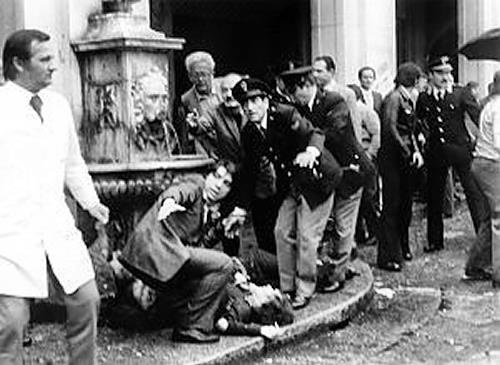
28 May 1974: the neo-fascist group Ordine Nuovo, as part of the pension strategy decided by the Americans and the P2, kills eight demonstrators with a bomb in Piazza della Loggia, Brescia[88]
Giovanni Falcone discovered, several years after these events, that Concutelli was a member of the Palermo Masonic lodge Camea (membership card no. 11,070), which also counted among its members men from Cosa Nostra[89] . All the affiliates were investigated in 1979 for their role in the fake kidnapping of the piduist financier Michele Sindona[90] . Another important element in the strategy of tension in a Gellian and piduist key is Federico Umberto D’Amato: born in 1919, during the Second World War he was deputy commissioner of public security in Rome; after 8 September, he became an active agent in counter-espionage operations employed by James Angleton’s OSS, with whom he had a personal relationship. After the war, he was assigned to the political office of the Questura in Rome, then to the Reserved Affairs Office of the Ministry of the Interior[91] , of which he became director in 1971.
D’Amato came into contact with Stefano Delle Chiaie and Avanguardia Nazionale through Mario Tedeschi, a journalist of the magazine “Il Borghese”[92] . He was removed from the Confidential Affairs Office in 1974, after the Piazza della Loggia massacre in Brescia, and sent to head the Border Police[93] . The records of the Banco Ambrosiano bankruptcy trial show several transfers made by Gelli to D’Amato for the purchase of a flat in Paris[94] . It is evident that D’Amato used his role within the Ministry of the Interior, in addition to the experience and contacts gained through his espionage activities, on the one hand to divert the investigations and cover up the perpetrators of the atrocities committed by neo- and post-Fascist terrorism from the Piazza Fontana massacre onwards[95] , and on the other hand to provide Licio Gelli with information.
At the same time as the fall of D’Amato, in 1974, Ordine Nuovo and Avanguardia Nazionale became the subject of judicial enquiries, and the piduists Maletti and Miceli saw their position within the Defence Information Service jeopardised. Gelli’s name is not yet known to judicial circles nor, still less, to the public. Years later, the P2 Commission revealed the decisive role of the P2 in the implementation, cover-up of those responsible and in the deception of the investigations into the Piazza della Loggia bombing (28 May 1974)[96] .
The top management of the SID, in the person of Gianadelio Maletti, head of counter-espionage, admitted to having concealed the information concerning elements of the Veneto ordinovismo, from an infiltrated agent named Maurizio Tramonte, who was acquitted together with the ordinovisti Delfo Zorzi and Carlo Maria Maggi in the trial for the[97] massacre. Tramonte’s information, which spoke of the planning of a large-scale attack a few days before the massacre, was found in 1991 by Judge Guido Salvini in the offices of the SISMI in Padua, while the Padua Carabinieri destroyed copies in their possession of similar documents, in contravention of the obligation to preserve them[98] . Commander of the Carabinieri in Padua from 1970 to 1976, years in which the city was a nerve centre of black subversion, was Manlio Del Gaudio, piduista[99] .
Financial Terrorism
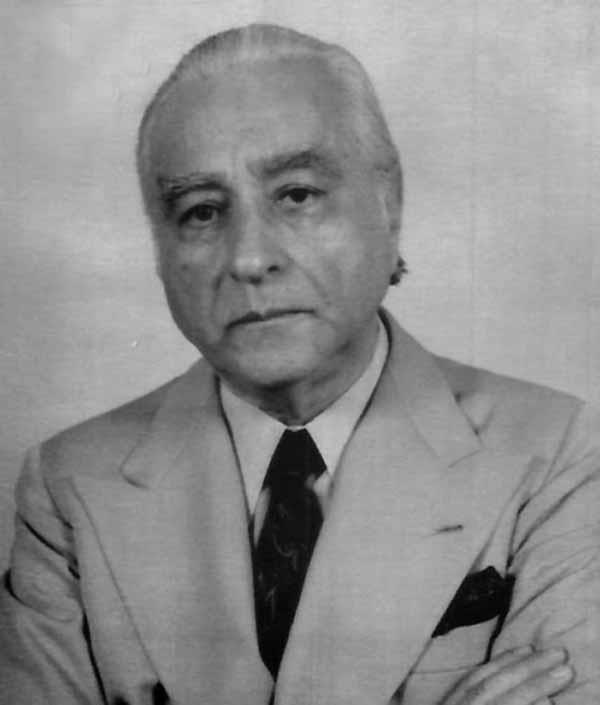
Umberto Ortolani, the freemason who coordinated the expenses of the American terrorist and corrupt system in Italy – the man whom Licio Gelli, in order to make clear its importance and secrecy, called Doctor Nobody[100]
The attacks, the cover-up of the neo-fascist terrorists in hiding, the network of corrupts and collaborators of the Italian and American secret services, need increasing amounts of money. And Gelli takes care of this personally, thanks to his lodge and thanks to Ruggero Firrao, who in the mid-1970s is Director General of Currency at the Ministry of Foreign Trade, as well as being a P2 member. His function is to ensure Gelli’s authorisation for the Ministry to open substantial credit lines to support the reckless financial operations coordinated by two P2 affiliates: Umberto Ortolani and Roberto Calvi[101] .
An entrepreneur and financier, Ortolani has a past as a SIM (Military Information Service) agent during the years of the fascist dictatorship. Always in close contact with the world of the press and publishing, he is publisher, at different times, of two press agencies the Stefani and, later, the Agenzia Italia (which he founded with US funds from the European Reconstruction Program[102] , later sold to ENI)[103] ; in South America, he has been active since after the Second World War, becoming in the 1960s the owner of the Banco Financero Sudamericano (Bafisud) in Uruguay, the Banca Continental and the Banca del Plata[104] in Argentina; alongside his banking activities, he also worked as a publisher, taking control of three daily newspapers: “Il Corriere degli Italiani” (Argentina), “La Hora de Italia” (Uruguay) and “Il Giornale d’Italia” (Brazil)[105] , managing to become president of the Italian Press Association abroad.
An early acquaintance of DC exponents such as Amintore Fanfani and Giulio Andreotti, Ortolani managed to enter the circle of Cardinal Giacomo Lercaro, who was stationed in Bologna, where he was often to be found as managing director of Ducati[106] . In the second half of the 1950s, he became a collaborator of the Christian Democrat Fernando Tambroni, until the fall of the government he headed (with the support of the MSI) in 1960, becoming one of the key players in the mammoth business of building speculation in Rome – by putting his hand, as president of the National Institute for Civil Servants, to the construction of the Athletes’ Village for the Rome Olympics[107] .
His sons are also involved: Mario and Piero move to Uruguay to manage the expansion into Brazil and Argentina of Bafisud in Montevideo, while his eldest son Amedeo, from 1975, runs Voxson, a radio manufacturer owned by EMI[108] . A man held in the highest esteem in the upper echelons of Italian politics and the Vatican, Ortolani was several times awarded honorary titles: Grande Ufficiale Ordine al Merito della Repubblica Italiana[109] , Cavaliere di Gran Croce, Gentiluomo d’Onore di Sua Santità[110] , Ambassador of the Sovereign Order of Malta. For the death of Cardinal Lercaro, he commissioned Giacomo Manzù to sculpt a statue dedicated to the cardinal in the Bologna basilica of San Petronio[111] .
This is the man who, in 1972, came into contact with Licio Gelli: the magazine O.P. by Mino Pecorelli published an article in which he blamed Argentina’s problems on three important Italians working in Buenos Aires at that time: Oberdan Sallustro – director of the Argentinean FIAT Concord, shortly afterwards kidnapped and killed by the ERP (Ejercito Revolucionario del Pueblo)[112] , Aurelio Peccei – founder of FIAT Concord, who returned to Buenos Aires to try to free Sallustro and then hurried back to Italy – and Umberto Ortolani. The latter, concerned for his own safety and that of his children, finds the right contact in Gelli, who offers him protection in exchange for P2 membership. In view of the links between Mino Pecorelli (director of O.P.), the secret services and P2, it is possible that the blackmail set up by Pecorelli was favoured by Gelli himself in order to encourage Ortolani’s approach.
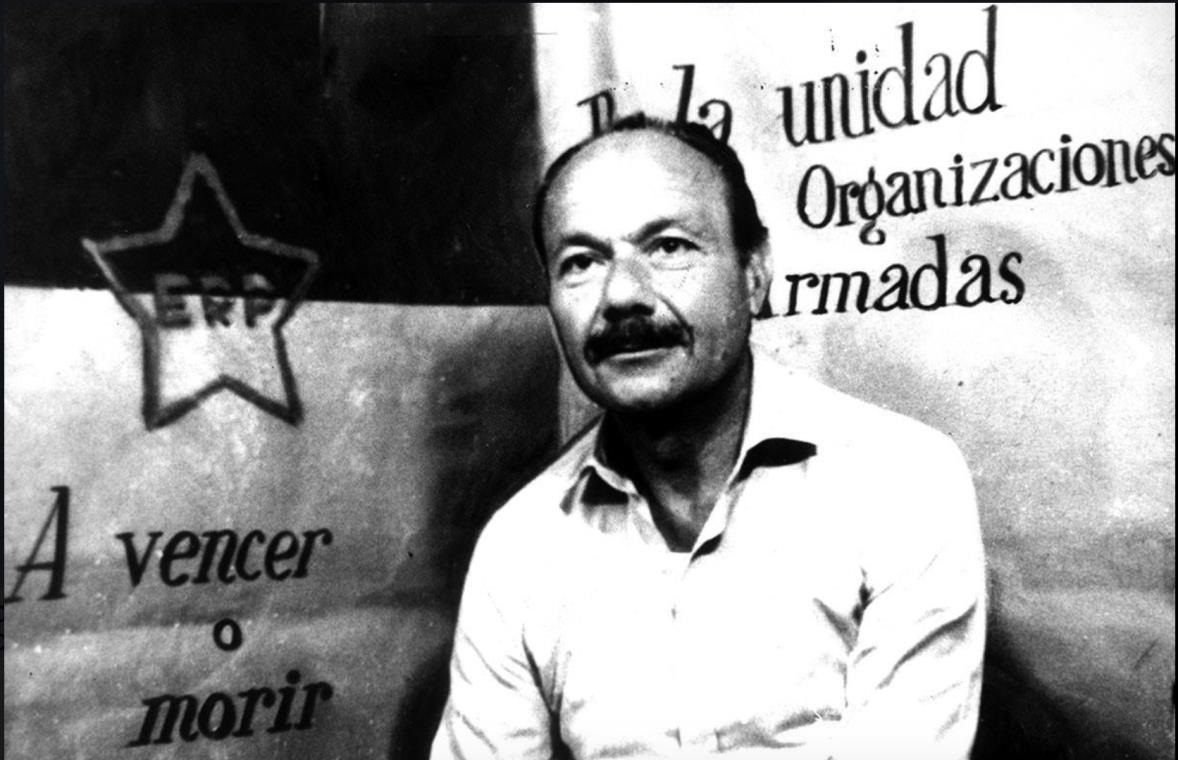
March 1972: FIAT manager Oberdan Sallustro is kidnapped and then killed by ERP terrorists [113]
In June 1975, Amedeo Ortolani, at the time managing director of Delfino Immobiliare, was kidnapped by the Marseilles clan and then released after eleven days following the payment of a substantial ransom (one billion lire[114] ); in 1994, Antonio Mancini (a turncoat, former member of the Banda della Magliana) stated that it was a fake kidnapping, organised by the Marseilles to allow Umberto Ortolani to dispel doubts about his relations with the criminal organisation[115] . In March 1976, Albert Bergamelli was arrested thanks to Judge Occorsio’s investigations, claiming to be protected by a large family. Which this family is, can be guessed from the arrest two days later of his lawyer, Gian Antonio Minghelli, son of Police General Osvaldo and organisational secretary of the P2[116] . Questioned by judges Occorsio and Ferdinando Imposimato, Bergamelli himself admitted his membership of Freemasonry, without however naming the P2[117] .
The same Grand Master Salvini, in March 1975, was interrogated five times by investigating judge Francesco Fiore concerning the Borghese coup d’état (1970), the failed coup d’état of the summer of 1974 (the so-called ‘white coup’ by Edgardo Sogno)[118] , and his contacts with the Veneto subversives of the ‘Rosa dei Venti’ group[119] . On the same subjects Fiore repeatedly interrogated Vito Miceli and Gianadelio Maletti (piduists in charge, respectively, of the SID and the SID counter-espionage), who were then also heard by Judge Giovanni Tamburrino – who was investigating the Rosa dei Venti in Padua – together with Army Colonel Amos Spiazzi and Giulio Andreotti[120] . Gelli’s power had grown so much that it could no longer be concealed for long. All over Italy there are magistrates who, investigating the right-wing terrorist acts of recent years, sooner or later arrive at his name or that of the P2.
In October 1974, Emilio Santillo, director of the Interior Ministry’s Counter-Terrorism Inspectorate, sends Tamburrino a report on the links between Gelli, the P2 (initially identified as the ‘Gelli Group’) and Borghese’s coup d’état projects. A second report by Santillo was sent to the Investigating Judge of Bologna, Vito Zincani, on 27 December 1975: suspicions about Gelli, his fascist past and the activities of the P2 were reinforced. The third report was sent by Santillo to Pier Luigi Vigna and Luigi Pappalardo, magistrates of the Public Prosecutor’s Office in Florence, on 9 October 1976, as part of the investigation into the murder of Judge Vittorio Occorsio[121] .
Here there is widespread talk of Italian Freemasonry, of the P2, of its headquarters, of Gelli’s Argentine passport, issued to him by order of Perón, of Lebole’s business with Romania, of the Hotel Excelsior in Rome – used by Gelli as his Roman base for private meetings and gatherings; Santillo also refers to the document that Gelli is said to have circulated to the ‘brothers’ about the measures to be taken by the DC in government to get out of the crisis: radio and television control, revision of the Constitution, abolition of parliamentary immunity, reform of the judicial system, revision of the powers of the Police Forces, two-year suspension of trade union activities and a freeze on labour contracts[122] .
The report also contains the names of many of the then alleged (because they emerged in the press) P2 members, such as Miceli and Maletti, Carabinieri captain Antonio Labruna, an agent of the SID, Admiral Gino Birindelli, Remo Orlandini, a builder close to Borghese and implicated in the Golpe, Michele Sindona, Umberto Ortolani and Gian Antonio Minghelli[123] . Ministerial bodies and investigators knew, at the time, circumstantial but circumstantial information about Gelli’s activities. Minghelli’s arrest, due to his role in the P2, risked bringing to the attention of the newspapers the Venerable’s past and the names of some Freemasons involved in judicial enquiries; a real jinx for Gelli, who risked losing the power he had painstakingly won. Convinced of the game of anticipation, Gelli proposes/imposes on Salvini the precautionary suspension of the work of the P2, so as to allow the ‘brothers’ to find serenity away from the scandals[124] .
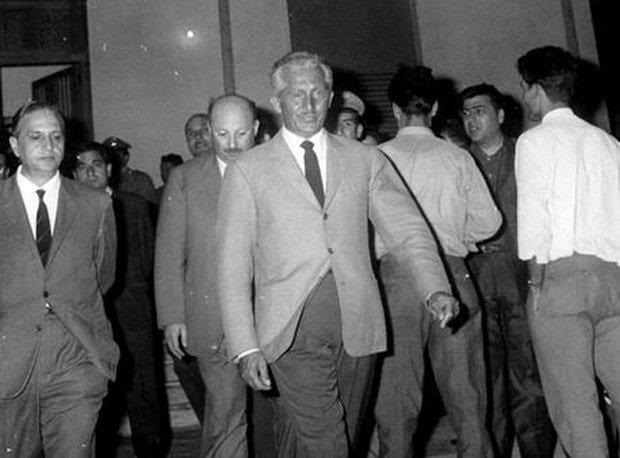
Prefect Emilio Santillo – the first to draw up a report on the illegal activities of the P2 Lodge[125]
This does not, however, render the lodge inoperative; Gelli continues to scout out new affiliates to be unofficially initiated into the P2, which is currently closed, entrusting the initiation duties to Gamberini, moving the ritual venue to the Excelsior suite rented by him some time ago. With regard to membership, Gelli received from Salvini, blackmailed or frightened, blank membership cards signed by him, which Gelli could then dispense at will to people on whom no body of Freemasonry could carry out a prior verification of suitability[126] . With a skilful sleight of hand Gelli managed to overcome the difficult moment, transforming P2 into an organisation outside, in fact, the Grand Orient. Frozen, the lodge can no longer be removed from its control.
The press, however, began to link the actions of the Anonima Sequestri and the Clan dei Marsigliesi with the black subversion, placing at the top of the pyramid a Masonic organisation led by a powerful man from Arezzo… Gelli’s name appeared for the first time in the Messaggero, signed by Mario Caffaro, on 9 May 1976. To keep the press at bay and ward off attacks from the PCI, the only element out of his control, Gelli resorted to a singular stratagem: he obtained from the former head of the CLN in Pistoia, Italo Carobbi, a copy of the old 1944 pass certifying his activities in favour of the partisans, circulating it in the Masonic milieu and in the editorial offices of the newspapers. Rumours about a Gelli torturing partisans immediately died down; the press was more generally caught off guard by the revelations contained in the document, which cast a completely new light on an extremely elusive character[127] .
Shortly before his death, Judge Occorsio confided to l’Unità reporter Franco Scottoni his intention to investigate the ONPAM (World Organisation for Masonic Assistance), with proselytes especially in South America, denounced as illegal by the official Freemasonry, which, however, is joined by the P2. The ONPAM, behind which Gelli appears to be[128] , announced its intention to purchase a building in Rome worth eight million dollars. The judge allegedly hypothesised that Bergamelli’s Anonima seizure activity could be used to finance operations such as this[129] . Salvini (15/08/1976) and Gelli (18/05/1977) were interrogated, as part of the investigation into the Occorsio murder, precisely in relation to the P2, the ONPAM and the relations between Gelli and Minghelli[130] .
On 22 May 1981, two months after the Castiglion Fibocchi kidnapping, an arrest warrant was issued for the Venerable, but he went missing. He remained a fugitive in France and then in South America until his arrest in Geneva on 13 September 1982. He is locked up in Champ Dollon prison, from which he escapes on 10 August 1983. Gelli lived on the run until 21 September 1987, when he turned himself in in Geneva. He was extradited to Italy the following February, obtaining parole for health reasons. Also in 1998, after being definitively sentenced to 12 years for the Banco Ambrosiano collapse, Gelli went into hiding for four months, before being caught and serving his sentence under house arrest at villa Wanda[131] .
In July 1982, at the time of her secret sojourn in Nice, Maria Grazia Calvi was stopped on her arrival at Fiumicino airport; in the false bottom of one of the suitcases of the Venerable’s daughter, some documents were found, including the Democratic Revival Plan[132] . Most likely written in 1976 by a group of experts linked to Gelli, the Plan is a programme for the non-conspiracy ‘revitalisation’ of democratic institutions through the restriction of civil, political and associative freedoms in general, the top-down selection of people in charge of government functions the control of information, the divestiture of the RAI, the birth of private television networks, the banning of parties, trade unions, institutions, newspapers that can be traced back to the communist or even only progressive area, the limitation of the power of the judiciary and, in the medium term, through amendments to the Constitution[133] .
It is surprising to note how many of these intentions found application in the following decades, especially in relation to the career, first entrepreneurial and then political, of the piduista Silvio Berlusconi. Fininvest, Forza Italia, the decadence of RAI, the ownership of numerous newspapers, the battles against the judiciary and the parliamentary attempts to subjugate the power of judges to that of politics, the split in the trade union front in 2002, with the CGIL left alone to contest the amendment to Article 18 of the Workers’ Statute, are some of the legacies that the Worshipful Master, at the hands of one of his ancient protégés and associates, has graciously imposed on our existence[134] .
The Banco Ambrosiano – an untangible skein
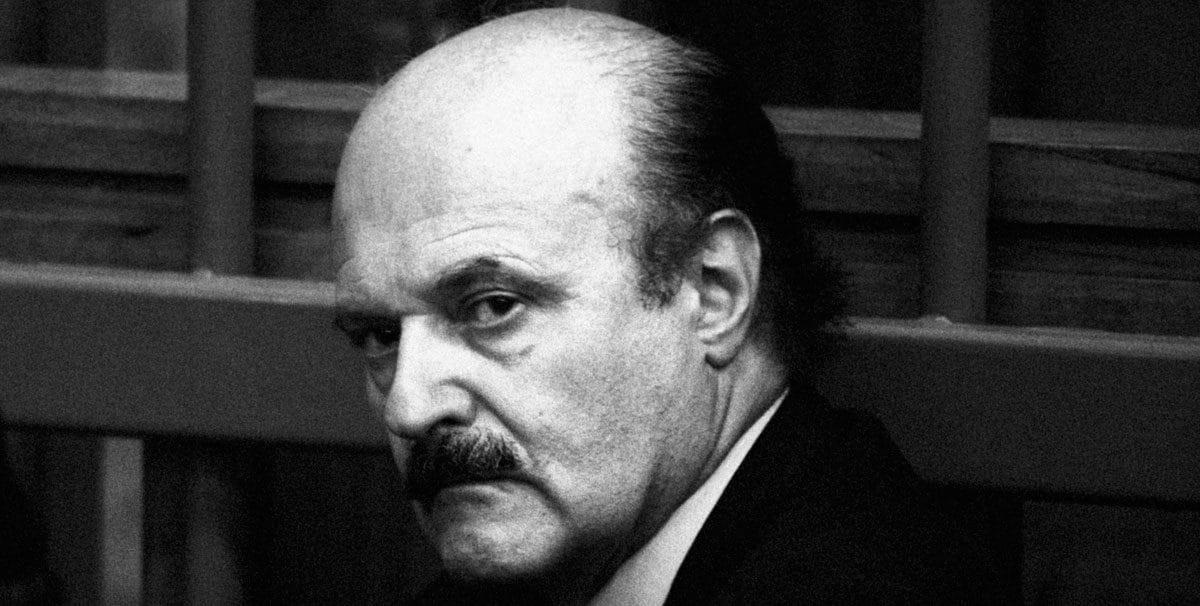
The Chairman of Banco Ambrosiano, Roberto Calvi[135]
The need for money grows, and the urgency with which it must be made available grows, so that Gelli, in the mid-1970s, gradually gains covert control of Banco Ambrosiano. Born in 1920, Roberto Calvi began working at Banco Ambrosiano as a clerk in 1947, under the wing of the manager Alessandro Canesi, the future president of the Institute[136] . In 1971 Calvi became general manager, in 1974 vice-president and in 1975 president of Banco[137] . The history of the Ambrosiano, well before being linked to that of the P2, runs close to that of the Istituto per le Opere di Religione (IOR), the Vatican bank. Founded in 1896 by the lawyer (and Franciscan tertiary) Giuseppe Tovini to finance pious institutions[138] , the Ambrosiano had proven relations with the IOR as early as 30 October 1967, the date of the signing of a contract signed by the Vatican accountant Pellegrino de Strobel and Monsignor Donato de Bonis (future secretary of the IOR) whereby the IOR authorised the Banca del Gottardo to manage a company called Intermax[139] .
This bond was inherited by Cardinal Paul Marcinkus when he took over the leadership of the Vatican Institute, as well as by Calvi when he ascended to top positions in the Ambrosiano. In 1956, when Alessandro Canesi is general manager, executives of the Banco give a mandate to the lawyer Walter Keicher (a man in the service of powerful and discreet businessmen from all over the planet) to register a company called Lovelok in Liechtenstein; Keicher is the person who, on behalf of the IOR, creates Intermax. Intermax is used a year later to set up the Gotthard Bank[140] .
In 1960, the Ambrosiano acquired 40% of the capital of this Swiss institute, presumably from Lovelok itself. In 1963, Lovelok opened its subsidiary Compendium in Luxembourg, later renamed BA Holding: 80% of the capital required for the transaction was paid in by Lovelok, the rest by the “Etablissement pour les Participations Internationales”, a Liechtenstein trust company belonging to the Banca del Gottardo. Compendium’s aim was to buy shares in the Ambrosiano originally intended for small shareholders, but which in reality were to remain under the control of the bank itself and those who managed it; within three years the company came to hold 8% of the Ambrosiano’s capital. The operation was financed by Lovelok, with money from the Ambrosiano or the Banca del Gottardo; Compendium was managed, from its creation, by Calvi on behalf of Canesi[141] . The management of the Ambrosiano thus held a secret shareholding in the institute’s capital, which would be moved and hidden several times and would be found, many years later, in the accounting folds of United Trading, a pivotal company in the off-shore system set up by Calvi[142] .
In 1965 Canesi became chairman of Ambrosiano; in 1968 Calvi’s Compendium began reselling Ambrosiano shares, most of which were purchased by Banca del Gottardo through the trust company Locafid. Calvi joined the board of directors of Ultrafin, a Lugano-based merchant bank created by Lovelok[143] . It is always the same money, but it is moved so often that it seems much more. In 1970, Calvi was already in close contact with Luigi Mennini, managing director of the IOR, former director of Banca Unione and adviser to Michele Sindona’s Banca Privata Finanziaria (of which the IOR was a minority shareholder )[144][145] . Mennini’s son, Alessandro, was hired in 1969 in the foreign office of the Ambrosiano, alongside Giacomo Botta and Filippo Leoni, who became close collaborators of Calvi and would later be charged with the bank’s fraudulent bankruptcy[146] .
As if that were not enough, the Sicilian banker Michele Sindona arrived among the protégés. Calvi met Sindona in 1968: an old fellow student of his was the banker’s father-in-law; on 11 May 1970, relations became business relations with Compendium’s purchase of a package of shares in Sindona’s Banca Unione. A few days later, the IOR purchased 10,000 shares in the Ambrosiano. In July, Compendium acquires other shares in Banca Unione, reaching 7% of the capital; Sindona, through the Swiss company Valiana, buys Ambrosiano shares. The IOR continued to do the same, coming to own 1.14% of the institute.
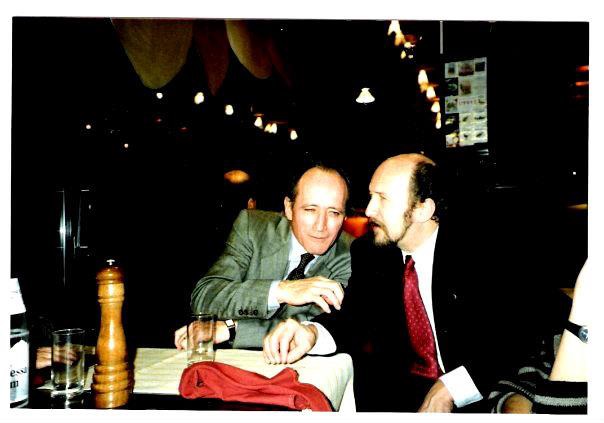
Fernando Garzoni (left), one of the very few who really knew how much money was circulating in the accounts of Banca del Gottardo, Banco Ambrosiano, the IOR and Banca Privata Italiana[147]
In June 1970, meanwhile, Compendium created a second company named Ultrafin, based in New York, moving the first Ultrafin (created by Lovelok) from Lugano to Zurich. At the end of the year, the Ambrosiano and Banca del Gottardo purchased 60% (40 to the former and 20 to the latter) of Compendium from Lovelok[148] . Always the same money, which is moved faster and faster, to make it look like more than it really is. To manage their existence and appearance in parallel, Ultrafin created an entire structure of accountants, bookkeepers and lawyers, which would be coordinated, even after Calvi’s death, by the Ticino trustee Helios Jermini[149] .
1971 opened with the promotion of Paul Marcinkus from general director to president of the IOR[150] and continued with the trip of Roberto Calvi and Fernando Garzoni – president of the Banca del Gottardo[151] – to Nassau, Bahamas. More than the splendid climate and deep-sea fishing, the two’s interest is in setting up a new Compendium subsidiary in a tax haven: on 23 March, Cisalpine Overseas Nassau Bank sees the light of day. Board members include Calvi, Garzoni and Ned Feldman – director of Ultrafin New York. Calvi, who is given signatory power, is also general manager of Ambrosiano. The first operation in his new post was to ally himself with Jocelyn Hambro[152] , Sindona’s financier through the participation of his Hambros Bank in the Banca Privata Finanziaria[153] . Ultrafin and Hambros, together with Colias, acquire control of the Milanese financial company Bastogi, which is on the verge of bankruptcy. Colias was a company created in Luxembourg by Michele Sindona, to whom the Ambrosiano provided the more than $15 million needed for his part in the operation[154] .
In the whirlwind of money, the outgoing figures are increasingly large. As in the case of the acquisition of the Catholic Bank, 50% of which is paid a disproportionate price in relation to the returns on deposits: $46.5 million. But this price was crumbled among the thousand Ambrosiano subsidiaries, so that in the end the real price, with the addition of gifts and bribes, would be 73.5 million dollars[155] . In 1972, Calvi took control of the Credito Varesino owned by Anna Bonomi and her son Carlo. Having accumulated a heavy debt to rake in Varesino shares at the end of 1971, Bonomi entered into relations with Calvi’s Ambrosiano in February 1972.
Officially, Ambrosiano lent Bonomi 8.9 billion lire, securing 2.1 million shares of Credito Varesino at a price 20% below the market price. Under the table, however, the parties signed a different agreement: the Bonomi family sold the shares to Calvi at a much higher price than the market price; the difference in price was paid in francs into a Swiss bank (an illegal operation, which in 1981 was among those contested against Calvi in the trial for exporting currency[156] ). Calvi received a further 1.1 million foreign shares of Varesino from the Bonomis, thus coming to control 53% of it. The company that buys Credito Varesino is Cimafin, financed by Cisalpine for 90 million Swiss francs[157] .
At this point, a problem arose that forced the protagonists of these events to change their plan of action: in the first half of 1972, Price Waterhouse was commissioned to audit the accounts of Cisalpine and Compendium. During the process of approving the accounts, Price Waterhouse’s auditors could not avoid noting Cisapline’s enormous exposure to Compendium ($43 million), Radowal, Vertlac ($59 million), Lovelok ($12.5 million) and Cimafin ($23 million). In the face of such a large amount of loans, no adequate collateral was found. In spite of this, Price Waterhouse signed the Cisalpine’s balance sheets without major notes[158] .
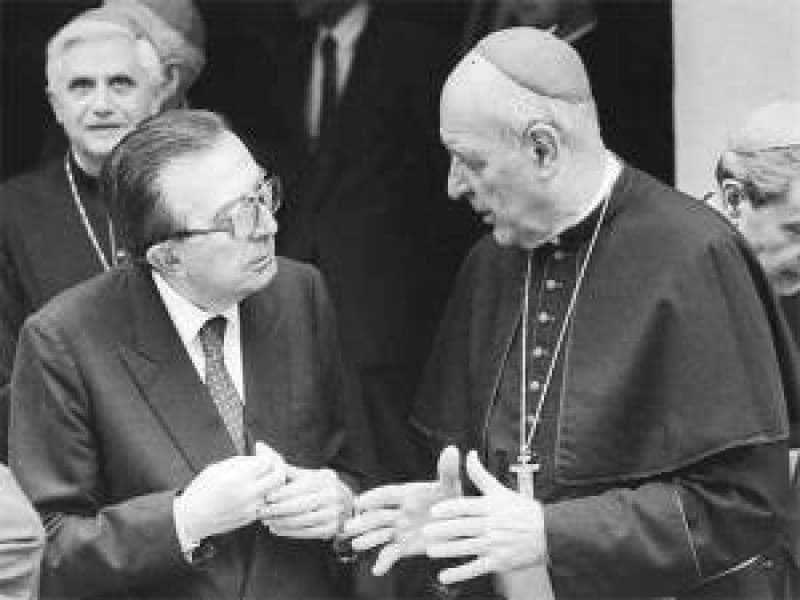
From left: Jospeh Ratzinger (the future Pope Benedict XVI), Giulio Andreotti, Cardinal Paul Marcinkus[159]
Soon afterwards, at the end of April, Calvi wrote off the debts of all Liechtenstein-registered companies except Vertlac and Compendium. Running into further problems with the auditing companies, but also with members of the board of directors, means risking no longer being able to use Cisalpine to issue unsecured loans to Liechtenstein companies, rendering the network of secret societies that had been painstakingly set up useless. The strategy that Calvi and Marcinkus devised to escape the controls consisted of an agreement on account transactions, known in English as back-to-back transactions: from now on, the Cisalpine, in order to finance one of the companies in the network – very often Radowal -, pays the money into the IOR, which then takes charge of secretly transferring the sum to the recipient company. This game is made possible by the unique position of the IOR, which is in practice subject to no control over its own transactions, while at the same time constituting a guarantee for the Cisalpine’s deposits. Through the Cisalpine-IOR-Radowal cycle, no loans to the network companies appear in the Nassau bank’s balance sheets, invisible to auditors and board members. Even the director, Pierre Siegenthaler, states that he was not made aware of the manoeuvres by Calvi or Marcinkus[160] .
Walther Pierre Siegenthaler, a former manager of the Deltec Bank, was hired by Calvi as director of the Cisalpine at the end of 1970, but he was lying when he said he knew nothing: he was one of the cashiers of Opus Dei, an extremely powerful and extremely conservative organisation, formed like a diocese without territory[161] , which spread from Spain throughout the world[162] and which was already extremely powerful in Calvi’s time. Opus Dei aims to control the IOR, which is why Siegenthaler monitors Marcinkus’ movements from a privileged position. After Cisalpine became Banco Ambrosiano Overseas Ltd. (Baol) on July 1, 1980, Siegenthaler transferred huge sums of money from Baol to Panamanian companies controlled by the IOR, contributing greatly to the crisis of the system set up by Calvi. Siegenthaler is, for example, president of Astolfine, a Panamanian company linked to the IOR, which has a debt with the Banco Ambrosiano Andino of Lima (another institution founded by Calvi) of about USD 500 million[163] . Astolfine, together with Bellatrix, Belrosa, Erin, Laramie and Starfield constituted the group of companies registered in Panama and managed by Siegenthaler’s men with the aim of embezzling money from the Ambrosiano[164] .
In the spring of 1973, Anli became a subsidiary of Radowal, which took control and increased its capital from one to ten million Swiss francs. Anli used the money to increase the capital of its subsidiary Suprafin, which was under negotiation for shares in Ambrosiano on Piazza Affari, and to finance Banca del Gottardo and Compendium-Ba Holding, as well as to purchase additional B shares in Cisalpine. Calvi used short-term loans on deposit (back-to-back) to finance long-term investments, presumably because the IOR was committed from the outset to renew deposits without fail, thus masking the instability of the system set up[165] .
Calvi’s acquisition of the Pacchetti company caused such losses that it can be considered one of the central elements of the enormous liabilities incurred by the Ambrosiano at the time of the banker’s death. In 1972 Sindona is on the verge of concluding the purchase of the dilapidated Franklin National Bank of New York by acquiring 22% of the share package for a sum of $40 million. To this end, he must not only repossess the 138 million Swiss francs with which, a short time earlier, he had financed the acquisition of Credito Varesino, but also find some more[166] .
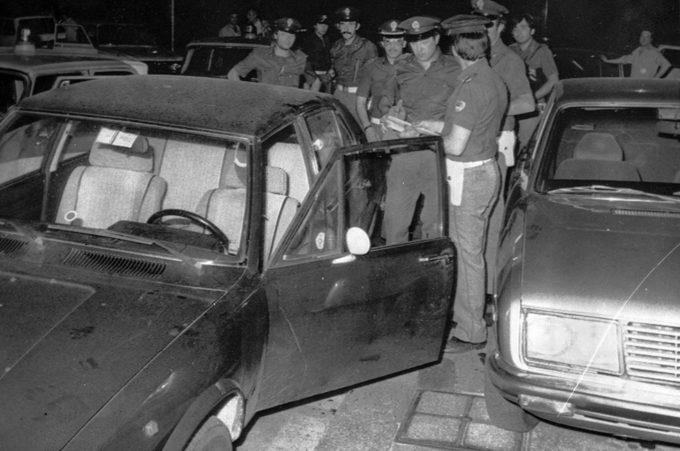
11 July 1979: the Ambulance has just taken away the bullet-riddled body of lawyer Giorgio Ambrosoli, who is investigating links between Calvi, Gelli, the Vatican and Opus Dei[167]
Calvi and Sindona set up an operation that brought Sindona fresh money and allowed Calvi to speculate on the shares of Credito Varesino, again counting on the collaboration of the IOR. Everything revolves around the Luxembourg company Zitropo, which Sindona creates in June 1972; Zitropo acquires control of Pacchetti, used by Sindona, through its president Massimo Spada, to take over electrical and agricultural machinery companies. Pacchetti grows at Piazza Affari. The IOR, however, opens a new contract with the same money, expiring in March 1973, setting a price of 10,000 lire per share. This means a loan of 9870 billion lire (17 million dollars) at the rate of 9% against the sale of shares at a price 20% higher than the official quotation. Liquidator of Sindona’s enterprises in Italy, Giorgio Ambrosoli investigates the figures manoeuvred by Calvi, Sindona and Marcinkus[168] . Before he could reveal further details of the affair, Ambrosoli was killed under his own home on 11 July 1979 by William Joseph Aricò, hired for the operation by Michele Sindona[169] .
Questioned by the FBI in April 1973 in connection with trafficking in fake or stolen US securities, Marcinkus admitted to knowing Mario Foligni, who had allegedly tried to persuade the president of the IOR to lend 300 million dollars to Pesenti, only to be flatly refused. Foligni hit the headlines when his name was involved in the enquiry known as the ‘oil scandal’: in the relative trial, the Guardia di Finanza generals Raffaele Giudice (Andreotti’s man, member of the P2) and Donato Lo Prete (P2 member, very close to Sereno Freato, Aldo Moro’s secretary) were convicted, together with several accomplices, of having swindled the State of 300 billion lire through the cover of companies smuggling oil and fuel derivatives[170] .
Desperate for money to cover up the gigantic shortfalls, Marcinkus turned to his new friends: the Mafiosi Gaetano Badalamenti, Giuseppe Calò, Stefano Bontate and the brothers Antonio and Ignazio Salvo: in the request for authorisation to proceed, an ascertained corporate and financial link emerged, which had begun in 1975, between Fiorenzo Ley-Ravello and Domenico Balducci. The latter and Flavio Carboni – which will be discussed below – appear to be the mediators for ascertained economic relations between Ley-Ravello’s company Flaminia Nuova and Giuseppe ‘Pippo’ Calò[171] . Calvi’s official shareholdings, on the other hand, were fine: Banca Cattolica, Credito Varesino, Toro. The Ambrosiano group was, at this time, one of the most powerful in Italy, thanks to the decisive support of the IOR[172] .
Or, rather, they would be fine if Calvi were not forced to come to the rescue of Michele Sindona, who had to merge his real estate companies into the Finambro finance company, so as to hide his losses; the merger and the 160 million lire capital increase were not authorised by the Bank of Italy, yet the American authorities gave Sindona permission to buy the Franklin Bank and use its assets to pay off his other debts. In September 1973, during a public speech in New York, Andreotti called Sindona the saviour of the lira, but the Franklin Bank was already sailing in bad waters; in July, Jack Begon, the American journalist who had written about the relations between Sindona, the CIA and the Mafia, was kidnapped in Rome and held prisoner for four weeks. Suspicions about Sindona became more circumstantial. And yet, in January 1974, the US ambassador in Rome, John Volpe, awarded him the title of ‘Man of the Year 1973’[173] .
A few days earlier, police officer Angelo Sorino, whom the Mafia held responsible for passing information to Begon[174] , was murdered in Palermo. In February 1974, La Malfa resigned as Treasury Minister[175] and was replaced by Christian Democrat Emilio Colombo[176] . In April, despite the growing difficulties of the Franklin National Bank, Sindona carried out a capital increase of his Finabank in Geneva, in which the IOR had a 29% shareholding: Marcinkus was prudent, buying only half of the shares and selling the remaining rights to cover the costs of the underwriting operation, reducing his own shareholding to 22%. At the same time Calvi places (sells) his own 18% of Finabank. Calvi writes off the debt the following year, losing the money forever. In May, the Federal Reserve blocked an attempt by Sindona to make Franklin National buy its own shares in a financial company it had purchased the previous year at an inflated price; large customers withdrew their deposits from the institution. The news spreads in Italy, and the shares on the stock exchange plummet[177] .

8 October 1974: Michele Sindona is arrested[178]
After the first inspections by the Bank of Italy, the Milanese magistrates Guido Viola and Ovilio Urbisci discovered that Sindona’s institutions had literally been plundered, leaving a hole of 386 million dollars. On 27 September 1974, the Bank of Italy appointed the lawyer Giorgio Ambrosoli as liquidator of Sindona’s institutions. On 8 October, the Franklin National Bank went bankrupt, forcing the US taxpayers to plug a $2 billion hole: at the time, it was the biggest financial disaster in US history. Michele Sindona, warned by Licio Gelli of the arrest warrant issued against him by the Swiss police, took refuge in Taiwan; Carlo Bordoni, his closest collaborator, chose Venezuela, where he was arrested in 1978 and extradited to Italy.
After making useful statements in the affairs of his former boss, he is put on bail and disappears, reappearing in the United States, where he becomes a collaborator of justice as a key witness against Sindona in the Franklin National Bank bankruptcy trial[179] . The IOR and Calvi, who emerge almost unscathed from the bankruptcy, are, however, forced to pour money into the myriad of offshore companies linked to Sindona and liquidate everything in order to erase the traces of their relationship with the Sicilian banker[180] .
In November 1974, Calvi began the divestiture of all the companies in the secret network of which Sindona was aware: Radowal disappeared, replaced by the Panamanian United Trading, created the previous February by Arthur Wiederkher, Consul of Panama in Zurich as part of a project to publicise the American country as a tax haven. In November, United Trading was sold to Banca del Gottardo, with Garzoni as president and Francesco Bolgiani, manager of the Swiss bank, as his deputy. Radowal’s assets were then transferred to United Trading. The latter then went into liquidation together with Cimafin, Lovelok, Vertlac, Tunfell and Fabiar. United Trading, now at the head of the secret network, inherits the shares of Banco Ambrosiano and the rest of the offshore network[181] .
At that time, Gelli became Master Venerable of the P2, while Ortolani was dealing with the kidnapping of his eldest son Amedeo. Andrea Rizzoli introduces Ortolani to his son Angelo, managing director of the publishing house of the same name, and Bruno Tassan Din, the group’s financial director. The latter needed to raise funds to finance the group. Calvi and Ortolani met in mid-1975. Subsequently, Calvi was introduced to Gelli and joined P2. The association between the three had, immediately, positive results for Calvi, who obtained from the piduist Ruggero Firrao, director of currencies at the Ministry of Foreign Trade, the authorisation that the Ambrosian group needed in order to continue operating with the Cisalpine. Within a few months, Banca Cattolica and Credito Varesino obtained the same authorisations. Between 1976 and 1978, Calvi placed five million dollars in Firrao’s current accounts[182] .
For Gelli and Ortolani, of course, there is no lack of advantages: the two managed to receive from Calvi, between 1975 and 1981, about 250 million dollars. Ortolani convinced Calvi of the need to expand his circle of friends and business; in the meantime he began to receive money: it is possible that it was Calvi himself who paid the ransom for the liberation of Amedeo Ortolani. In October 1975, Gelli and Calvi opened two accounts at the UBS in Geneva: the money that Calvi had paid to Ortolani’s relatives was transferred to these accounts, as well as to accounts in Ortolani’s name; by including the banker among the recipients of the money, Gelli ensured that he had it in his hands and could blackmail him at any time. It was at this time that Calvi succeeded Mozzana as chairman of Ambrosiano, maintaining the position of managing director[183] .

Angelo Rizzoli and his then wife, actress Eleonora Giorgi[184]
Having solved one problem, here comes another: Calvi, who must present balanced accounts, needs to sell part of the Ambrosiano shares in his portfolio to his secret network. In those days, Ortolani introduced Angelo Rizzoli and Tassan Din to Gelli to talk about the new publishing house they had bought in Argentina; Gelli convinced them to join the P2 and introduced them to some banker friends. Among them, in addition to Alberto Ferrari of Banca Nazionale del Lavoro[185] and Giovanni Cresti of Monte dei Paschi di Siena[186] , is Roberto Calvi. Rizzoli had been at the helm of the family business since 1971, appointed managing director by his father Andrea, while Bruno Tassan Din was hired in 1973.
In 1974, Eugenio Cefis, head of Montedison (where Tassan Din comes from), played a crucial role in the purchase of Corriere della Sera by Rizzoli. The newspaper was, at the time of the transaction, owned by the Crespi, Agnelli, Moratti and other families, and lost a lot of money. The 49.5 billion lire necessary for the purchase came to Andrea Rizzoli – the main shareholder – half from Montedison, and another half from a bank loan. Wanting to buy the Agnelli’s share as well, Rizzoli clashed with his sister Giuseppina, whose 30% share in the family business he took over. In doing so, Rizzoli’s finances are wiped out[187] .
It was in this context that Angelo and Tassan Din met Ortolani; the two entered into a secret agreement with Montedison, which provided them with billions of lire in exchange for journalistic support for the company’s strategies. Calvi, at the end of 1975, opened a credit line of 3 billion lire with the Ambrosiano in favour of Rizzoli. In exchange, Rizzoli bought 510,000 Ambrosiano shares through the offshore network: the intermediate steps were used to inflate the price and allow Calvi’s companies to make a substantial profit. Included in the transaction are the lavish commissions for Gelli and Ortolani[188] . But at that point Marcinkus and the IOR set about ousting Angelo Rizzoli and acquiring control of the Corriere della Sera themselves[189] . The operation is carried out with the usual whirlwind of partly real, partly apparent transfers to an untangible network of offshore companies, making the Rizzoli family’s Luxembourg holding company insolvent. The Rizzolis’ holding company is put into liquidation and the debt never paid[190] .
To make matters worse, Michele Sindona returned to the scene in 1977. Since December 1974 in the USA, following the Watergate scandal, the Sicilian banker lost Nixon’s protection and decided to return to Italy, where he had to repay $386 million to mitigate the weight of the charges against him. To find the money, the P2 proposed an intervention by the Bank of Italy, also advocated by Andreotti. However, the liquidator of Sindona’s Italian assets, Giorgio Ambrosoli, as well as the governor of the Bank of Italy, Paolo Baffi, and the head of the inspectorate, Mario Sarcinelli, are firmly opposed. Calvi unsuccessfully tried to change the minds of the latter two. Sindona, nervous about the situation, asks the president of the Ambrosiano to help him in another way: his Milanese lawyer Rodolfo Guzzi asks Calvi to fictitiously buy a villa that Sindona owns near Como for 500,000 dollars. Upon Calvi’s refusal, a man named Luigi Cavallo ‘the provocateur’, director of Agenzia A, launches a campaign of pressure on the Milanese banker, including through posters put up in Milan during the night of 12-13 November 1977, in which Calvi is accused of fraud, false accounting, exporting currency and other crimes, many of which were committed in connection with Sindona[191] .
Sindona claims to have received $5 million from Calvi. The financial situation of Calvi’s network abroad is increasingly critical: the little money left in the secret network is barely enough to pay the $15 million in interest charges. Even the banks of the Ambrosiano group exceed their debt limits, but for now they are covered by Firrao at the ministry. The situation precipitates when, thanks to a letter from Cavallo to the Bank of Italy, on 17 April 1978 Mario Sarcinelli sends inspector Giulio Padalino to Ambrosiano at the head of fifty officials, who carry out a meticulous inspection of the papers of the group’s institutions, including Banca Cattolica and Credito Varesino. Calvi’s room for manoeuvre was zero: with interest on deposit account transactions continuing to rise and the indebtedness of United Trading, the entire network was on the verge of collapse[192] .
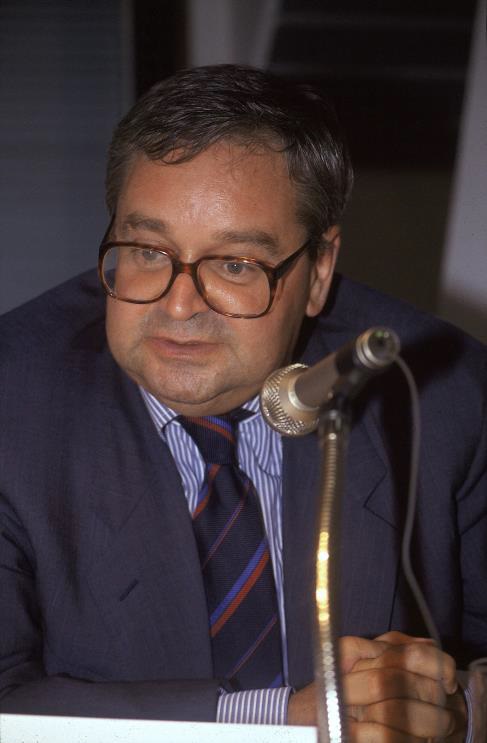
Florio Fiorini[193]
Providential, for Calvi, is the intervention of ENI by Giorgio Mazzanti and Leonardo Di Donna and Banca Nazionale del Lavoro by Alberto Ferrari. Three piduists. Tradinvest, a bank created by ENI in Nassau at the same time as Cisalpine, lent 10 million dollars to BA Holding. BNL provided 20 million on a short-term basis. The money was used by Calvi to restructure the network’s debts and to cover the bloody investment in Capitalfin, an enterprise in which ENI and BNL, the two ‘saviours’, were involved. However, the network companies are no longer able to generate profits: with the restructuring, the sum of the back-to-back loans in dollars increases by another 53 million. In charge of the loans is ENI’s treasurer, Florio Fiorini[194] , who at the same time has been commissioned by the IOR to liquidate one of the Vatican’s oldest companies, SASEA, which will end up in a bloody judicial bankruptcy, for which only Fiorini will pay, and not the cardinals who were at fault[195] .
Ortolani was responsible for the agreement signed in the summer of 1979 between Calvi and Carlo Pesenti. His Italmobiliare controlled three credit institutions: Banca Provinciale Lombarda, Istituto Bancario Italiano and Credito Commerciale. These are among the banks used by the IOR. The insurance company RAS is also in his hands. In the presence of Gelli and Ortolani, the two bankers sign an agreement of mutual support, at a time of difficulty. Pesenti joined the board of directors of La Centrale; the following November, his difficulties came to a head. Unable to repay the IOR a loan of 50 billion lire dating back to 1972, the amount of which had risen to 200 billion, Pesenti had to sell Credito Commerciale[196] and Calvi lost almost 50 million dollars in one of his companies, United Trading[197] .
The losses were hidden in the bank controlled by Calvi in Nicaragua, but in Managua, the dictator Somoza was overthrown by the Sandinista Front[198] , so Cavi, in search of stability, opened a new bank in Peru, the Banco Ambrosiano Andino, whose first operation was to grant a loan to the Lima government to buy an Italian warship[199] . In addition to expanding the money ring of Calvi’s secret network, the Banco Andino was used for arms trafficking operations with Chile, Nicaragua, Argentina, Brazil and Nigeria, as well as a loan of 21 million dollars granted by Calvi to the Italian Socialist Party. When, at the end of 1981, the auditors of the Bank of Italy examined the accounts of the Banco Andino, they discovered a liability of 1,000 billion lire, decreeing the end of Calvi’s career – and not only that –[200] .
More generally, from 1976 onwards Ambrosiano financed Venezuela, Ecuador, Peru and Argentina for the purchase of military vessels and helicopters produced by Fincantieri. In addition to the institutes already mentioned – and to Cisalpine of Nassau and Ultrafin of New York – Calvi opened Ambrosiano Representação y Servicios in Brazil, Ambrosiano Group Promotion in Panama, and also participated in Banco Hypotecario, the financial group supporting the Chilean dictator Pinochet[201] . The country with which Gelli has the deepest ties is Argentina, where members of Videla’s military junta, in government in those years, are members of the P2. Argentine General Emiliano Massera trafficked arms on behalf of his government and his own pockets, in agreement with Italian Admiral Giovanni Torrisi, bringing to Italian industries many of the hundreds of millions of dollars spent by Videla to arm his country[202] .
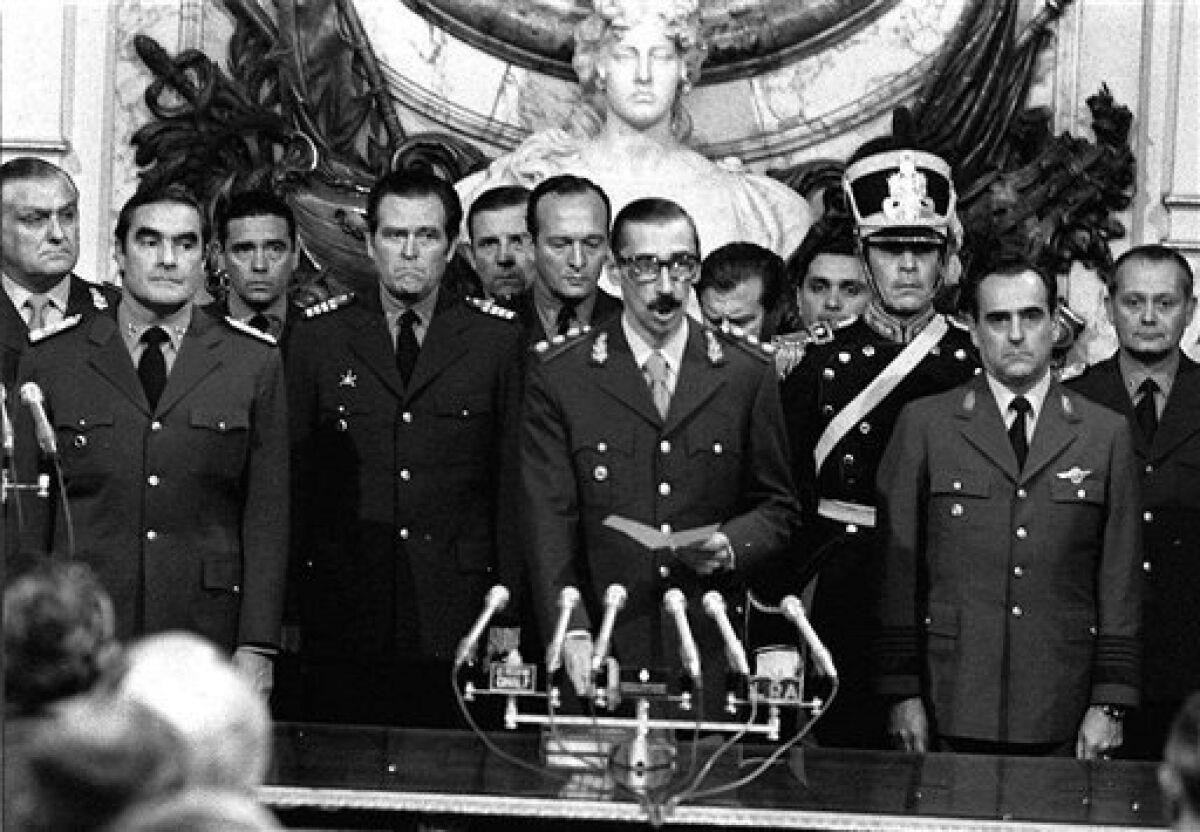
24 March 1976: General Jorge Rafael Videla (centre) announces to the nation that the Argentine army has seized power and decided on martial law. The real organiser of the coup d’état is General Emilio Eduardo Massera (second from the left), who financed, in cahoots with Calvi and Gelli, the purchases of Italian arms that were used to seize power[203]
Massera[204] and Torrisi[205] are members of the P2. Personal ambitions were mixed with an initially purely political project, so dear to Gelli and the US Secretary of State Henry Kissinger, of financing the fight against communism in all its forms[206] . In Europe, between 1980 and 1981, Calvi financed the Polish Catholic trade union Solidarność, led by Lech Wałęsa; pressure from Pope John Paul II to help the movement, which was important in the process of democratisation in Poland, was decisive[207] . Moreover, at Gelli’s hand, Calvi succeeds Sindona in laundering money from Cosa Nostra activities: Pippo Calò, Salvatore Riina, Francesco Madonia and Vito Ciancimino[208] have sums invested with the IOR, which feeds them into Calvi’s network[209] ; it is likely that the motive for the banker’s murder must be sought in these acquaintances.
And then there are the billions paid to the parties. Calvi supported the socialists, social democrats, republicans and, from July 1980, the communists. The PSI accumulated a substantial debt to the Ambrosiano, which demanded its restitution. The newly elected member of parliament Claudio Martelli asked Gelli to intercede with Calvi. The banker was in favour of supporting the party again, in exchange for new foreign funding from ENI[210] . The Socialist Party leadership approved the proposal; Calvi received instructions to transfer the money – two payments of $3.5 million – to the UBS account 633369 in Lugano. In spite of their commitments to Calvi, the Socialists did not use part of the money received to settle their previous debts with the Ambrosiano, which were added to the long list of money lost forever[211] .
The existence of this account was discovered during the seizure of Gelli’s papers in Castiglion Fibocchi. Here the ‘Protection’ account (so called by Gelli himself) is considered to be in Martelli’s possession on behalf of the PSI secretary Bettino Craxi; the document found among the Venerable’s papers also mentions a pact for future ENI financing by naming Florio Fiorini and Leonardo Di Donna[212] . In May 1981, Roberto Calvi was arrested on charges of illegally exporting capital abroad – a mockery of destiny: during the search of Licio Gelli’s houses, the police were looking for the list of those who had illegally taken money to the east, and discovered instead the list of members of the P2 Lodge[213] .
In July 1981, Calvi was sentenced to four years and a sixteen billion fine for currency offences and released on bail. Marcinkus refused to testify in favour of the banker, admitting his own responsibility. On 2 July 1981, Calvi revealed to judges Dell’Osso, Fenizia and Volpe information on the financial relations between the Ambrosiano and the socialist and communist parties, including the financing of 21 million dollars to the PSI, but also on arms trafficking and South American orders and oil bribes. These declarations reveal the dangerousness of Calvi, on whom an ever-growing cloud of pressure was gathering, aggravated by the fact that, at that time, he no longer had effective control of the secret network and the Ambrosiano, whose shares were increasingly in the hands of the IOR (at Calvi’s death, the Vatican institution held 80%)[214] .
In March 1981, Calvi hired 35-year-old Francesco Pazienza as his personal assistant. A medical graduate, he initially worked at Cocean, the company of oceanologist Jacques Cousteau, later becoming an international consultant on marine projects. In the second half of the 1970s, he founded his own company, Tecfin, which operates in Paris but is based in Luxembourg. In the French capital, he met the former NATO commander, General Alexander Haig[215] , Henry Kissinger’s personal assistant in the National Security Council[216] . Having specialised in obtaining confidential information, at the beginning of 1980 he was called to Rome by the piduist General Giuseppe Santovito – director of the Military Secret Service (SISMI) – as an expert consultant on France[217] .
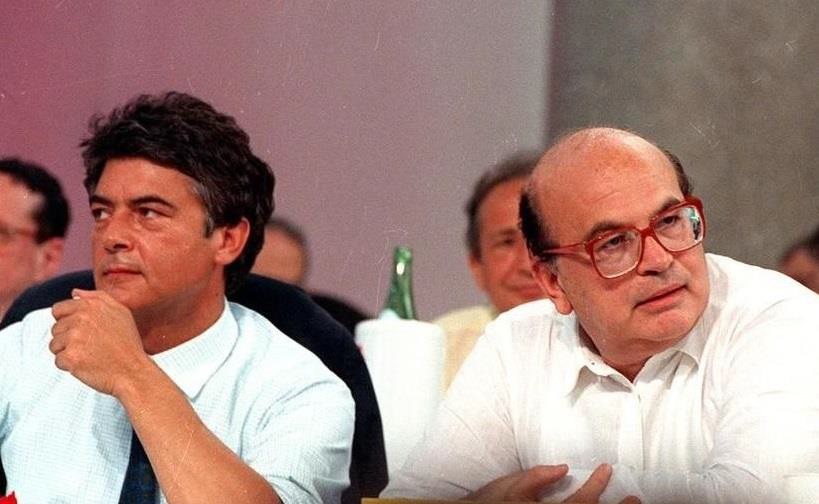
Claudio Martelli and Bettino Craxi[218]
According to his own statements, Pazienza met Calvi at the end of the 1970s in Washington during a meeting of the International Monetary Fund, while the collaboration began during a meeting that Pazienza organised for the Christian Democrat Flaminio Piccoli in the USA with Haig. Pazienza found a copy of the secret dossier that Cardinal Egidio Vagnozzi prepared in 1978 on the IOR, on the board member of Banca Cattolica del Veneto (who was elected in those days to be Pope John Paul I) and on the illegal sale of the bank to Calvi[219] . The latter declared, in a letter to the Grand Master of the Grand Orient of Italy, Armando Corona, that Pazienza was imposed on him by Mr Piccoli and was only concerned with extorting money from him[220] .
In the interrogation report of 2 April 1985, Nara Lazzerini (Gelli’s secretary from 1976 to 1981) states that Francesco Pazienza meets with Gelli at least twice at the Hotel Excelsior in Rome. She is present at almost all of the important meetings[221] and is aware of the activities of Ezio Giunchiglia, Gelli’s courier, after whose escape he endeavours to transfer capital to the Monte Carlo lodge, which he intends to rebuild together with William Rosati after the venerable man’s absconding began. The two charged members a fee of between one and twenty million lire. Lazzerini once accompanied Gelli to the headquarters of the Monegasque lodge in 1978, on the top floor of one of the four skyscrapers then built in the principality. Vittorio Emanuele of Savoy and Rainier of Monaco were then members of the Monte Carlo lodge[222] . According to the testimony of Giuliano Di Bernardo, Grand Master of the Grand Orient of Italy from 1990 to 1993, the Grand Master at the time, Armando Corona, set up new covered lodges (along the lines of the P2)[223] in defiance of the 1982 Spadolini-Anselmi law[224] and threatened Lazzerini if she continued to talk to magistrates[225] .
Calvi decided to get out of the Rizzoli-Corriere della Sera quagmire. In October 1981, the banker came into contact with the businessman Carlo De Benedetti, a leading exponent of secular finance, for whom the purchase of the publishing house was hypothesised at that time. Calvi proposed to De Benedetti the possibility of joining the board of directors of Ambrosiano with the aim of succeeding him as chairman. Calvi was willing to leave, while De Benedetti had the opportunity to acquire the largest Italian financial group, a privileged position to arrive at the purchase of RCS. In November 1981, De Benedetti became vice-president of Banco Ambrosiano, after purchasing 2% of the bank’s shares for 52 billion lire[226] .
Not even a month after the start of the partnership, Angelo Rizzoli alerts De Benedetti of the potential losses of Banco Ambrosiano Andino. Concerned, the entrepreneur finds confirmation from an enquiry by the president of Peruvian Olivetti, Paolo Venturini. De Benedetti receives reticent confirmation from Calvi as to the nature of the assets and the value of the Peruvian institution’s exposure, also learning of the IOR’s involvement. On 22 January 1982, De Benedetti resigned from all positions in Ambrosiano. The break-up cost Calvi 80 billion lire[227] .
Calvi tried to establish new alliances to revive the fortunes of his empire. The Bank of Italy, however, opposed both the merger of Ambrosiano Overseas with Artoc Bank, a Nassau institution behind the combination of Arab capital and London finance, and the merger between Ambrosiano and Carlo Pesenti’s Italmobiliare, heavily exposed to the Milanese institution. In the spring of 1982, the businessman Giuseppe Cabassi, close to Craxi and a friend of the piduist businessman Silvio Berlusconi, bought many Ambrosiano shares: by helping to reorganise the bank he aimed at gaining control of Rizzoli. Calvi’s solution was to have La Centrale buy the shares of the publishing group in the hands of Angelo Rizzoli and Bruno Tassan Din, and then resell them to Cabassi[228] , behind which Berlusconi himself would be hiding[229] .
Here comes the end
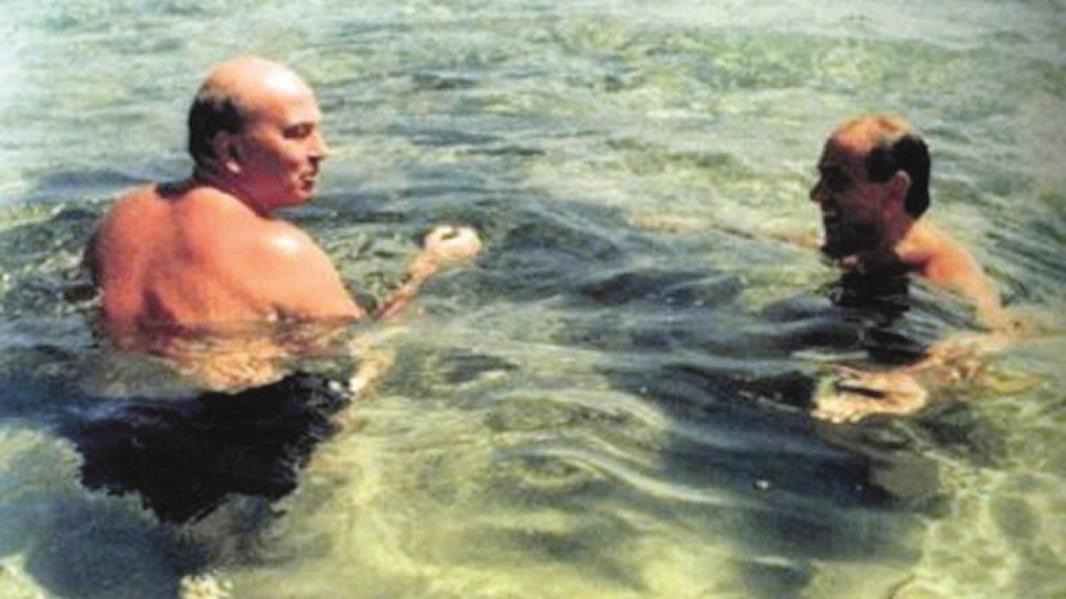
Summer 1975: Bettino Craxi and Silvio Berlusconi swim together in the sea off Tunisia[230]
The Bank of Italy, once again, opposes any attempt to carry out the operation[231] . The last hope of saving the empire was represented by Opus Dei, ever closer to John Paul II. As early as the beginning of 1982, Calvi sent Cardinal Pietro Palazzini, who was very close to Opus Dei, proposals, documents and reports on the IOR-Ambrosian relationship[232] . Palazzini suffered damage to his image in 1976, following the flight to Mexico of the president of Finmeccanica Camillo Crociani, a friend of the cardinal, in connection with the Lockheed affair (bribes paid to politicians to make the Italian Air Force buy aircraft from that industry)[233] . Calvi proposed to Opus Dei to oust Marcinkus, entrusting the IOR to a trusted person and having the Vatican bank take over 10% of Ambrosiano shares at a price of USD 1,200 million[234] .
In February and May, negative replies arrived: carrying out such an operation would mean, for Opus Dei, antagonising Cardinal Casaroli, the Vatican Secretary of State[235] . After writing directly to the pontiff, Calvi turned to Monsignor Hilary Franco, an American prelate of Calabrian origin who had links with Opus Dei and Cardinal Palazzini, his thesis advisor in theology. Ernesto Pellicani, about whom we will write later, also speaks of his ties with Freemasonry, referring to Armando Corona[236] . Hilary Franco is above all the man who, years later, introduced Roberto Calvi to Paul Marcinkus[237] . In June, Calvi wrote to Franco, hoping for his decisive intercession, which did not occur.
The activities of the faccendiere Flavio Carboni made it possible to connect distinct environments: the P2, Cosa Nostra, the Banda della Magliana, and the business community. Carboni was introduced to Roberto Calvi by Francesco Pazienza in the summer of 1981[238] . Calvi’s interest in Carboni lies in the possibility of accessing funds from the circles to which Carboni is linked: in fact, he takes out loans at usury rates from Domenico Balducci, a Roman entrepreneur linked to the Banda della Magliana[239] , and he is in contact with Pippo Calò, Cosa Nostra’s ambassador in the capital. Linked to Danilo Abbruciati, Balducci combines his activity as an entrepreneur and usurer with that of investor of the Band’s and the Mafia’s proceeds thanks to his ties with Calò[240] . He was killed by the Banda della Magliana in 1981 for having embezzled 150 million lire intended for a Mafia building speculation[241] .
Francesco Pazienza met Flavio Carboni in the early months of 1981 at the offices of the director of the First Police District, Francesco Pompò[242] , where he went, after the intercession of Federico Umberto D’Amato – affiliated to the P2 – to obtain favours on unimportant personal matters. There he met Carboni, on the spot for the renewal of his passport[243] . Pompò was investigated for aiding and abetting Domenico Balducci after the latter’s death[244] . Pazienza and Carboni met in the summer of that year, when Carboni made the acquaintance of Calvi[245] . In the meantime, the relations between the two were maintained by a Calabrian builder linked to Pazienza: Maurizio Mazzotta, one of the four convicted, in 1998, for the crack of Banco Ambrosiano (together with Gelli, Ortolani and Carboni)[246] . At the time, Carboni was Carlo Caracciolo’s partner in the newspaper La Nuova Sardegna[247] . Pazienza is therefore the intermediary between Carboni and Calvi.
In the same period, Carboni introduced Domenico Balducci to Pazienza to favour him in the purchase of a yacht. Pazienza favoured the acquaintance between Calvi and Carboni with the aim of putting the banker in contact with exponents of the Christian Democrat left and with Caracciolo, the editor of La Repubblica who was very active against Calvi, who was politically isolated at that time, Gelli and Ortolani being out of the picture due to the scandal following the search of GioLe and Villa Wanda the previous March. Carboni’s political contacts could be useful to Calvi[248] . In December 1981, Carboni introduced Calvi to the Grand Master of Italian Freemasonry, Armando Corona[249] (Republican Senator ). [250]
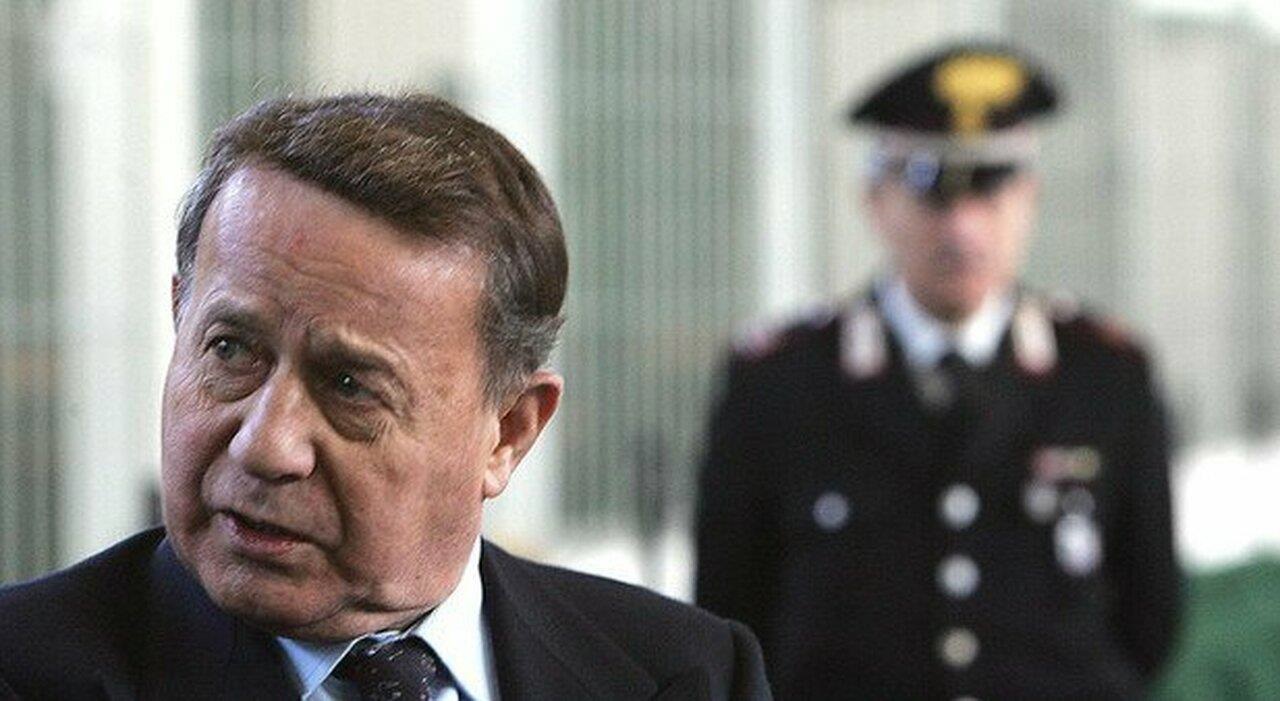
Flavio Carboni, Gelli and Berlusconi’s man in real estate operations in Sardinia[251]
Pazienza introduced Calvi to the Roman publisher Giuseppe Ciarrapico, as Andreotti’s man[252] . Ciarrapico obtained a 35 billion lire loan from Calvi for the acquisition of the Fiuggi water bottling company[253] . In a severe liquidity crisis, Calvi needed to take more money from the Ambrosiano without resorting to the IOR. For this reason, he authorised the Ambrosiano to grant a loan of 6 billion lire to Carboni’s company “Prato Verde”, which would return part of it to Calvi himself; the 1.4 billion that the banker should have received was thus managed by Pazienza and Mazzotta: 400 million as a “fee” to a lawyer that Calvi used and more than half a billion for the purchase of a yacht by Pazienza[254] . The operation would have been opposed by the deputy director of the Banco, Roberto Rosone[255] . Rosone’s opposition would have led to the attack against him in April 1982, in which Danilo Abbruciati, a leading member of the Banda della Magliana, lost his life[256] .
Ernesto Diotallevi[257] , believed to be in contact with the Banda della Magliana and Cosa Nostra, is Carboni’s partner in Prato Verde[258] . Flavio Carboni is the protagonist of another affair that links him inextricably with Silvio Berlusconi. After starting out as a bagman for the Christian Democrat deputy Giovanni Battista Pitzalis (deputy head of the cabinet of Education Minister Gonella), in the early 1970s Carboni became the owner of several plots of land in Gallura, registered in the name of two companies: Isola Rossa spa and Costa dei Corsi – as well as other properties in Porto Rotondo, registered in the name of Costa delle Ginestre spa[259] . Partners in the latter were Domenico Balducci and Danilo Abbruciati[260] . In 1972, he bought, for 1,100 million lire, the shares of Calderugia SA San Vittore, a Swiss company owned by the Italian Francesco Cravero to whom the land adjacent to Carboni’s was registered.
Carboni’s difficulty in finding the capital needed to pay off the debt to Cravero led the Sardinian businessman to actually acquire 60% of Calderugia only in 1979; the remaining 40% was previously sold by Carboni to Fiorenzo Ray-Ravello, an Italian resident in Switzerland, who, with an impressive round of transfers of shares and money between offshore companies, arranged for these Sardinian properties to end up in a Swiss bank trust account. From there, the properties are redistributed by the trust company Sofint[261] , which sells some plots to Romano Comincioli, the young Berlusconi’s front man and future Forza Italia senator[262] , who is a P2 member and a partner of Carboni[263] . Emilio Pellicani, Carboni’s secretary who was arrested in 1982, declared that Berlusconi had advanced Carboni the money needed to purchase the land from Liechtenstein companies[264] . In 1991, Judge Curtò decided on these transfers, after a long private conversation with Berlusconi. Years later, the same judge decided in favour of Berlusconi in the clash between Fininvest and Carlo De Benedetti’s CIR for control of Mondadori[265] . In 1993, Judge Curtò was found guilty of corruption in the Enimont affair[266] .
On 31 May 1982 Roberto Calvi received a letter from the Bank of Italy accusing the Institute of a $1.2 billion hole in the coffers of Banco Ambrosiano. On 2 June, Marcinkus made it known that it was not possible to meet the IOR’s debts to Ambrosiano. On 7 June, the bank’s board of directors dismissed the president. Calvi returned home with Carboni, and the two began a desperate journey through Europe in search of help, receiving only denials. Officially, Carboni is the last remaining friend. In reality, he is the one who prevents Calvi from getting his hands on the documents, hidden in Zurich, that would clear him with the judiciary and probably save him from jail[267] .
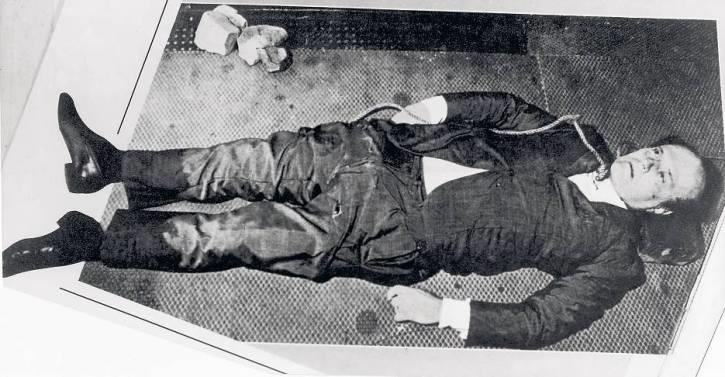
18 June 1982: Roberto Calvi’s body is found hanged under London’s Blackfriars Bridge[268]
The management of the Ambrosiano was entrusted to the Bank of Italy. The banker’s secretary, Graziella Corrocher, committed suicide by jumping from the fourth floor of the institute’s headquarters[269] . Calvi became, from this moment on, only an inconvenient witness of secrets that could not be revealed: details of the IOR’s involvement in illegal operations in cahoots with the Mafia, the CIA, the P2, bloody South American dictatorial regimes, infighting in the Vatican, the financing of parties, of Gelli and Ortolani, the fierce face of Opus Dei, the laundering of money from Cosa Nostra and the Banda della Magliana. That evening, left alone by Carboni, the probable orchestrator of the murder, Roberto Calvi was led out of his hotel by persons who remain unknown, taken under Blackfriars Bridge and hanged. It was the night between 16 and 17 June 1982[270] .
His death comes after that of Pope John Paul I (September 1978), Mino Pecorelli (March 1979), Giorgio Ambrosoli (July 1979), and before many others, because the Banco Ambrosiano’s accounting hole has still not closed, as the death of Lugano trustee Helios Jermini shows. The Cold War ended, but the CIA, with its unquenchable need for money and power, remained – and was resoundingly put back on track after the attack on the Twin Towers in New York and the invasion of Ukraine. There have been, all over the world, hundreds of criminal investigations and trials, some concluded with convictions, others without result. Dozens of history books have been written, films made, but the truth is slipping through our fingers, because the protagonists of these events are now dead, and new generations have lost the measure of how important these facts are.
ITA024
[1] https://www.sotterraneidiroma.it/tours/la-massoneria-a-roma
[2] https://www.ilgiorno.it/cronaca/turone-p2-blitz-arezzo-licio-gelli-1.6121434
[3] https://www.repubblica.it/commenti/2021/03/17/news/p2_dalla_scoperta_degli_iscritti_ai_misteri_delle_stragi_la_loggia_di_licio_gelli_40_anni_dopo-301053211/
[4] https://www.toscananovecento.it/custom_type/la-potenza-creativa-dellazione-violenta/
[5] Mario Guarino and Fedora Raugei, ‘Licio Gelli – Life, mysteries, scandals of the head of the P2 Lodge’, Dedalo, 2016, p.10
[6] https://www.cinquantamila.it/storyTellerArticolo.php?storyId=4fc58a68e3205
[7] Marco Francini, “Il periodo pistoiese di Gelli”, in “Quaderni di Farestoria”, Year IX – No. 1, January-April 2009, I.S.R.PT Editore, p. 39
[8] G. Piazzesi, ‘Gelli – The career of a hero of this Italy’, Garzanti, 1983
[9] https://www.remocontro.it/2015/12/19/c-era-volta-gerarca-gelli-cattaro-jugoslavo-scomparso/
[10] Mario Guarino and Fedora Raugei, ‘Licio Gelli – Life, mysteries, scandals of the head of the P2 Lodge’, Dedalo, 2016, p.14
[11] E. Cicchino and R. Olivo, ‘Hunting for Nazi Gold’, Mursia, 2011
[12] https://ricerca.repubblica.it/repubblica/archivio/repubblica/1998/09/13/gelli-lingotti-oro-nelle-fioriere.html
[13] https://www.altalex.com/documents/news/2015/12/16/morto-licio-gelli
[14] G. Piazzesi, ‘Gelli – The career of a hero of this Italy’, Garzanti, 1983
[15] https://www.lenius.it/10-cose-da-sapere-su-licio-gelli/
[16] G. Piazzesi, ‘Gelli – The career of a hero of this Italy’, Garzanti, 1983
[17] https://www.toscananovecento.it/custom_type/le-ville-sbertoli-un-manicomio-durante-loccupazione-nazifascista/
[18] Mario Guarino and Fedora Raugei, ‘Licio Gelli – Life, mysteries, scandals of the head of the P2 Lodge’, Dedalo, 2016, p.26
[19] http://uomini-in-guerra.blogspot.com/2019/10/salvate-il-principe-nero-come-loss-rapi_17.html
[20] T. Mangold, ‘Cold warrior : James Jesus Angleton : the CIA’s master spy hunter’, New York : Simon & Schuster, 1991
[21] https://ibiworld.eu/en/henry-kissinger-the-dark-soul-of-the-20th-century/
[22] Parliamentary Commission of Inquiry into the P2 Masonic Lodge, doc. XXIII, n.2-quater/3/N, Parliamentary Commission of Inquiry into the P2 Masonic Lodge, doc. XXIII, no. 2-quater/3/XI, vol. III, p. 154
[23] Parliamentary Commission of Inquiry into the P2 Masonic Lodge, doc. XXIII, n.2, bis/2
[24] Parliamentary Commission of Inquiry into the P2 Masonic Lodge, doc. XXIII, no. 2-quater/3/XI, vol. III
[25] Parliamentary Commission of Inquiry into the P2 Masonic Lodge, doc. XXIII, no. 2-quater/3/XI, vol. III
[26] Parliamentary Commission of Inquiry into the P2 Masonic Lodge, doc. XXIII, no. 2-quater/3/XI, vol. III
[27] Mario Guarino and Fedora Raugei, ‘Licio Gelli – Life, mysteries, scandals of the head of the P2 Lodge’, Dedalo, 2016, p.29
[28] https://www.toscananovecento.it/custom_type/un-altro-8-settembre-la-liberazione-di-pistoia/
[29] Parliamentary Commission of Inquiry into the P2 Masonic Lodge, doc. XXIII, no. 2-quater/3/XI, vol. III
[30] Marco Francini, “Il periodo pistoiese di Gelli”, in “Quaderni di Farestoria”, Year IX – No. 1, January-April 2009, I.S.R.PT Editore, p. 57
[31] Marco Francini, “Il periodo pistoiese di Gelli”, in “Quaderni di Farestoria”, Year IX – No. 1, January-April 2009, I.S.R.PT Editore, p. 57
[32] Mario Guarino and Fedora Raugei, ‘Licio Gelli – Life, mysteries, scandals of the head of the P2 Lodge’, Dedalo, 2016, p.32-36
[33] Parliamentary Commission of Inquiry into the P2 Masonic Lodge, doc. XXIII, no. 2-quater/3/XI, vol. III
[34] Parliamentary Commission of Inquiry into the P2 Masonic Lodge, doc. XXIII, no. 2-quater/3/XI, vol. III
[35] G. Casarrubea, M. J. Cereghino, “Tango connection: Nazi-fascist gold, Latin America and the war on communism in Italy 1943-1947”, Bompiani, 2007; G. Cavalleri, “Evita Perón and the gold of the Nazis”, Piemme, 1998, pp. 70-72
[36] G. Casarrubea, M. J. Cereghino, “Tango connection: Nazi-fascist gold, Latin America and the war on communism in Italy 1943-1947”, Bompiani, 2007; G. Cavalleri, “Evita Perón and the gold of the Nazis”, Piemme, 1998, pp. 70-72
[37] G. Casarrubea, M. J. Cereghino, ‘Tango connection: Nazi-fascist gold, Latin America and the war on communism in Italy 1943-1947’, Bompiani, 2007, pp. 27-28
[38] https://ibiworld.eu/en/henry-kissinger-the-dark-soul-of-the-20th-century/
[39] http://jens-kroeger.homepage.t-online.de/page1/vatikan.html
[40] https://www.fbi.gov/news/stories/the-fbis-world-war-ii-era-cover-company-at-rockefeller-center
[41] G. Casarrubea, M. J. Cereghino, ‘Tango connection: Nazi-fascist gold, Latin America and the war on communism in Italy 1943-1947’, Bompiani, 2007
[42] https://www.treccani.it/enciclopedia/giuseppe-nettuno-romualdi_%28Dizionario-Biografico%29/
[43] https://aventurasnahistoria.uol.com.br/noticias/almanaque/historia-biografia-otto-skorzeny-nazista.phtml
[44] N. Tranfaglia, ‘Come nasce la Repubblica’, Bompiani, 2004, pp. 81-86
[45] G. Casarrubea, M. J. Cereghino, ‘Tango connection: Nazi-fascist gold, Latin America and the war on communism in Italy 1943-1947’, Bompiani, 2007
[46] https://books.google.it/books?id=X5EgykND42kC&q=memo+July+3,+1946&pg=PA140&redir_esc=y ; https://www.nytimes.com/2003/03/09/world/argentina-a-haven-for-nazis-balks-at-opening-its-files.html
[47] Laske, Karl Ein Leben zwischen Hitler und Carlos: François Genoud Limmat Verlag, 1996, Zürich; https://books.google.it/books?id=w0RGVHB8YucC&redir_esc=y ; https://writing.upenn.edu/~afilreis/Holocaust/swiss-and-hitler.html
[48] http://www.magpictures.com/terrorsadvocate/genoud.html
[49] A. Kapil, ‘Middle East Studies Association Bulletin’, vol. 32, no. 1, 1998, pp. 92-94
[50] Peter Niggli, Jürg Frischknecht: Rechte Seilschaften. Wie die ‘unheimlichen Patrioten’ den Zusammenbruch des Kommunismus meisterten. Rotpunktverlag, Zürich 1998, S. 692 ff.; Mark Weizmann: Antisemitismus und Holocaust-Leugnung: Permanente Elemente des globalen Rechtsextremismus. In: Greven/Grumke 2006; http://www.trend.infopartisan.net/trd1102/t161102.html
[51] Parliamentary Commission of Inquiry into the P2 Masonic Lodge, Doc. XXIII, no. 2-quater/7/XIII, vol. VII p. 310
[52] G. Piazzesi, ‘Gelli – The career of a hero of this Italy’, Garzanti, 1983
[53] G. Piazzesi, ‘Gelli – The career of a hero of this Italy’, Garzanti, 1983
[54] https://www.ciociariaoggi.it/news/frosinone/8121/gelli-permaflex.html
[55] G. Piazzesi, ‘Gelli – The career of a hero of this Italy’, Garzanti, 1983
[56] G. Galli, ‘Affari di Stato, L’Italia sotterranea 1943-1990: storia, politica, partiti, corruzione, misteri, scandali’, Kaos Edizioni, 1997
[57] https://www.lanazione.it/arezzo/cronaca/vinete-sequestro-per-villa-wanda-respinto-il-ricorso-della-procura-1.4629624
[58] Parliamentary Commission of Inquiry into the P2 Masonic Lodge, Annexes, Series II, vol. III, volume I, p. 379
[59] Parliamentary Commission of Inquiry into the P2 Masonic Lodge, Annexes, Series II, vol. III, volume I, p. 55
[60] S. Flamigni, “Atlantic Plots. Storia della loggia massonica segreta P2”, Kaos Edizioni, 2014
[61] J.D. Buenker and L.A. Ratner, ‘Multiculturalism in the United States: A Comparative Guide to Acculturation and Ethnicity’, Greenwood Press, 2005
[62] https://www.youtube.com/watch?v=1c42ABDgEqs
[63] C. Palermo, ‘Il quarto livello: integralismo islamico, massoneria e mafia: dalla rete nera del crimine agli attentati al Papa nel nome di Fatima’, Editori Riuniti, 1996
[64] https://ricerca.repubblica.it/repubblica/archivio/repubblica/1984/07/04/segreti-di-belfagor.html
[65] https://www.grandeoriente.it/chi-siamo/la-storia/gran-maestri/publio-cortini-041053-26051956-%E2%80%A2-26051956-30111957/
[66] Mario Guarino and Fedora Raugei, ‘Licio Gelli – Life, mysteries, scandals of the head of the P2 Lodge’, Dedalo, 2016, p. 46
[67] https://www.grandeoriente.it/chi-siamo/la-storia/gran-maestri/giordano-gamberini-17-07-196121-03-1970/
[68] S. Flamigni, “Atlantic Plots. Storia della loggia massonica segreta P2”, Kaos Edizioni, 2014
[69] Parliamentary Commission of Inquiry into the P2 Masonic Lodge, Annexes, Series II, vol. III, tome I, pp. 395-396
[70] Parliamentary Commission of Inquiry into the P2 Masonic Lodge, Annexes, Series II, vol. III, volume I, p. 397
[71] G. Piazzesi, ‘Gelli – The career of a hero of this Italy’, Garzanti, 1983
[72] Parliamentary Commission of Inquiry into the P2 Masonic Lodge, Doc. XXIII no. 2-quater/6/tome XV, vol. VI, pp. 162-163
[73] Parliamentary Commission of Inquiry into the P2 Masonic Lodge, Doc. XXIII no. 2-quater/6/tome XV, vol. VI, pp. 162-163
[74] Parliamentary Commission of Inquiry into the P2 Masonic Lodge, Doc. XXIII no. 2-quater/6/tome XV, vol. VI, pp. 162-163
[75] https://www.fotoa3.it/event/it/1/158063/1973+-+Lino+Salvini+Gran+Maestro+del+Grande+Oriente+d%E2%88%9A%C3%89%26%23x8d%3BItalia
[76] G. Piazzesi, ‘Gelli – The career of a hero of this Italy’, Garzanti, 1983
[77] Parliamentary Commission of Inquiry into the P2 Masonic Lodge, Doc. XXIII no. 2-quater/6/tome XV, vol. VI, pp. 167-168
[78][78] Parliamentary Commission of Inquiry into the P2 Masonic Lodge, Annexes, Series II, vol. III, t. I, pp. 471-472
[79] Parliamentary Commission of Inquiry into the P2 Masonic Lodge, Annexes, Series II, vol. III, t. I, pp. 471-472
[80] Parliamentary Commission of Inquiry into the P2 Masonic Lodge, Doc. XXIII no. 2-quater/6/tome XV, vol. VI, pp. 168-171
[81] Parliamentary Commission of Inquiry into the P2 Masonic Lodge, Annexes, Series II, vol. III, t. I, p. 520
[82] http://www.fondazionespirito.it/il-novecento-attraverso-i-giornali-il-caso-di-mino-pecorelli/
[83] https://core.ac.uk/download/pdf/16697461.pdf
[84] https://www.strano.net/stragi/stragi/p2/elep2.htm
[85] Report of the Parliamentary Commission of Inquiry into the P2 Masonic Lodge, Hon. Tina Anselmi, pp. 12-13
[86] Report of the Parliamentary Commission of Inquiry into the P2 Masonic Lodge, Hon. Tina Anselmi, pp. 88-89 ; https://ibiworld.eu/2022/11/26/henry-kissinger-lanima-nera-del-xx-secolo/
[87] https://www.repubblica.it/commenti/2022/12/28/news/rauti_occorsio_mio_padre_ordine_nuovo_msi-380964060/?ref=RHLM-BG-I381047365-P5-S3-T1
[88] https://it.wikipedia.org/wiki/Strage_di_piazza_della_Loggia#/media/File:Strage_piazza_della_Loggia.png
[89] http://www.notavtorino.org/documenti-02/imposim-su-maf-masson-servsegr-2010-11.htm
[90] https://ricerca.repubblica.it/repubblica/archivio/repubblica/1993/04/15/le-logge-della-piovra.html
[91] https://www.huffingtonpost.it/entry/dentro-lufficio-affari-riservati_it_6051edc6c5b6f2f91a2dd7ee/
[92] http://leg13.camera.it/_dati/leg13/lavori/doc/xxiii/064v01t02_RS/00000009.pdf
[93] https://formiche.net/2022/03/guide-lespresso-federico-umberto-damato/
[94] https://www.huffingtonpost.it/entry/dentro-lufficio-affari-riservati_it_6051edc6c5b6f2f91a2dd7ee/
[95] L. Lanza, “Bombe e segreti. Piazza Fontana, una strage senza colpevoli”, Eleuthera, 1997, p. 20
[96] https://www.anordestdiche.com/la-p2-ordine-nuovo-e-piazza-della-loggia/
[97] https://www.anordestdiche.com/la-p2-ordine-nuovo-e-piazza-della-loggia/
[98] https://www.anordestdiche.com/la-p2-ordine-nuovo-e-piazza-della-loggia/
[99] https://ricerca.repubblica.it/repubblica/archivio/repubblica/1987/06/04/un-colonnello-finisce-in-cella-per-reticenza.html
[100] https://www.jensenmuseum.org/voxson-a-tumultuous-history/umberto-ortolani/
[101] C. Raw, “La grande truffa: Il caso Calvi e il crack del Banco Ambrosiano”, Mondadori, 1993, p. 143.
[102] https://ricerca.repubblica.it/repubblica/archivio/repubblica/1989/06/21/vita-soldi-potere-di-un-re-dei.html
[103] Mario Guarino and Fedora Raugei, ‘Licio Gelli – Life, mysteries, scandals of the head of the P2 Lodge’, Dedalo, 2016, p. 111
[104] https://ricerca.repubblica.it/repubblica/archivio/repubblica/1989/06/21/vita-soldi-potere-di-un-re-dei.html
[105] S. Flamigni, “Atlantic Plots. Storia della loggia massonica segreta P2”, Kaos Edizioni, 2014
[106] https://ricerca.repubblica.it/repubblica/archivio/repubblica/1989/06/21/vita-soldi-potere-di-un-re-dei.html
[107] C. Raw, “La grande truffa: Il caso Calvi e il crack del Banco Ambrosiano”, Mondadori, 1993, p. 143.
[108] C. Raw, “La grande truffa: Il caso Calvi e il crack del Banco Ambrosiano”, Mondadori, 1993, p. 140
[109] https://www.quirinale.it/onorificenze/insigniti/261482
[110] https://ricerca.repubblica.it/repubblica/archivio/repubblica/1984/04/22/scompare-dall-annuario-vaticano-il-nome-del.html
[111] https://ricerca.repubblica.it/repubblica/archivio/repubblica/1990/01/21/giudici-interrogano-ortolani-mi-iscrissi-alla.html
[112] https://archivi.polodel900.it/scheda/oai:polo900.it:121976_la-fiat-apprende-costernata-che-il-dott-oberdan-sallustro-direttore-generale ; https://spazio70.com/estero/raf-eta-ira-e-operazione-condor/buenos-aires-21-marzo-1972-lerp-sequestra-e-uccide-il-dirigente-fiat-oberdan-sallustro/
[113] https://www.infobae.com/en/2022/03/22/sallustros-ordeal-the-shocking-details-of-the-kidnapping-and-death-of-the-fiat-executive-in-the-hands-of-the-erp/
[114] https://www.avvocatisenzafrontiere.it/?p=1940
[115] M. Guarino, ‘Poteri segreti e criminalità: l’intreccio inconfessabile tra ‘ndrangheta, massoneria e apparati dello Stato’, Dedalo, 2004, pp. 41-42
[116] G. Piazzesi, ‘Gelli – The career of a hero of this Italy’, Garzanti, 1983
[117] https://www.avvocatisenzafrontiere.it/?p=1940
[118] https://ricerca.repubblica.it/repubblica/archivio/repubblica/2000/12/02/si-preparammo-il-golpe-ultima-verita.html
[119] https://ibiworld.eu/en/henry-kissinger-the-dark-soul-of-the-20th-century/
[120] Parliamentary Commission of Inquiry into the P2 Masonic Lodge, Annexes, 2-quater/3/part IV/part 1/ Vol. I
[121] https://patrimonio.archivio.senato.it/inventario/scheda/moro-viii-leg/IT-SEN-072-007421/relazione-del-questore-emilio-santillo-sulla-loggia-massonica-p2-p-509#lg=1&slide=0
[122] https://patrimonio.archivio.senato.it/inventario/scheda/moro-viii-leg/IT-SEN-072-007421/relazione-del-questore-emilio-santillo-sulla-loggia-massonica-p2-p-509#lg=1&slide=0
[123] Parliamentary Commission of Inquiry into the P2 Masonic Lodge, Annexes to the Report, Doc. XXIII 2-quater/3/tome XI/ Vol. III, p. 543 et seq.
[124] https://patrimonio.archivio.senato.it/inventario/scheda/moro-viii-leg/IT-SEN-072-007421/relazione-del-questore-emilio-santillo-sulla-loggia-massonica-p2-p-509#lg=1&slide=0
[125] http://www.ascenzairiggiu.com/rivolta-di-reggio-calabria/
[126] G. Piazzesi, ‘Gelli – The career of a hero of this Italy’, Garzanti, 1983
[127] G. Piazzesi, ‘Gelli – The career of a hero of this Italy’, Garzanti, 1983
[128] Parliamentary Commission of Inquiry into the P2 Masonic Lodge, Annexes to the Report, Doc. XXIII 2-quater/3/tome VII-bis pp. 132-133
[129] https://ricerca.repubblica.it/repubblica/archivio/repubblica/2006/07/10/cosi-ho-ucciso-il-giudice-occorsio.html ; G. Piazzesi, ‘Gelli – The career of a hero of this Italy’, Garzanti, 1983
[130] Parliamentary Commission of Inquiry into the P2 Masonic Lodge, Annexes to the Report, Doc. XXIII 2-quater/3/tome VII-bis pp. 131-137
[131] https://thevision.com/politica/licio-gelli-patacca/
[132] https://thevision.com/politica/licio-gelli-patacca/
[133] https://www.archivioantimafia.org/p2/piano_rinascita_democratica.pdf
[134] https://www.ilfattoquotidiano.it/wp-content/uploads/2010/07/Il-Piano-di-rinascita-democratica-della-P2-commentato-da-Marco-Travaglio.pdf ; https://www.ibs.it/da-gelli-a-renzi-passando-libro-aldo-giannuli/e/9788868336080
[135] https://www.roadtvitalia.it/morte-roberto-calvi-enigma-ancora-insoluto/
[136] https://www.professionefinanza.com/roberto-calvi/
[137] https://www.ilpost.it/2022/06/18/roberto-calvi/
[138] https://www.ilpost.it/2022/06/18/roberto-calvi/
[139] C. Raw, ‘La grande truffa: Il caso Calvi e il crack del Banco Ambrosiano’, Mondadori, 1993
[140] C. Raw, ‘La grande truffa: Il caso Calvi e il crack del Banco Ambrosiano’, Mondadori, 1993
[141] C. Raw, ‘La grande truffa: Il caso Calvi e il crack del Banco Ambrosiano’, Mondadori, 1993
[142] C. Raw, ‘La grande truffa: Il caso Calvi e il crack del Banco Ambrosiano’, Mondadori, 1993
[143] C. Raw, ‘La grande truffa: Il caso Calvi e il crack del Banco Ambrosiano’, Mondadori, 1993
[144] https://st.ilsole24ore.com/art/notizie/2013-04-24/vaticanoior-anni-6070-sindona-163653_PRN.shtml
[145] C. Raw, ‘La grande truffa: Il caso Calvi e il crack del Banco Ambrosiano’, Mondadori, 1993
[146] https://ricerca.repubblica.it/repubblica/archivio/repubblica/1987/05/05/il-crack-del-vecchio-banco.html
[147] https://www.ticinolive.ch/2015/04/14/scacco-matto-intervista-a-un-giocatore-non-dazzardo/
[148] C. Raw, ‘La grande truffa: Il caso Calvi e il crack del Banco Ambrosiano’, Mondadori, 1993
[149] THE LAST VICTIM OF BANCO AMBROSIANO | IBI World UK
[150] https://www.corriere.it/cronache/cards/vaticano-marcinkus-palazzo-londra-40-anni-scandali-finanziari/crack-ambrosiano-caso-marcinkus_principale.shtml
[151] https://ricerca.repubblica.it/repubblica/archivio/repubblica/1984/05/17/il-rinvio-giudizio-di-rosone-chiesto-dal.html
[152] C. Raw, ‘La grande truffa: Il caso Calvi e il crack del Banco Ambrosiano’, Mondadori, 1993
[153] https://moondo.info/michele-sindona-chi-era/
[154] C. Raw, ‘La grande truffa: Il caso Calvi e il crack del Banco Ambrosiano’, Mondadori, 1993
[155] C. Raw, ‘La grande truffa: Il caso Calvi e il crack del Banco Ambrosiano’, Mondadori, 1993
[156] M. Turco, C. Pontesilli and G. Di Battista, ‘Paradiso IOR – la banca vaticana tra criminalità finanziaria e politica. Dalle origini al crack Monte dei Paschi”, Lit Edizioni, 2013, p.102
[157] C. Raw, ‘La grande truffa: Il caso Calvi e il crack del Banco Ambrosiano’, Mondadori, 1993
[158] C. Raw, ‘La grande truffa: Il caso Calvi e il crack del Banco Ambrosiano’, Mondadori, 1993
[159] https://www.dagospia.com/rubrica-29/cronache/sterco-diavolo-sotto-cupolone-40-anni-scandali-finanziari-220946.htm
[160] C. Raw, ‘La grande truffa: Il caso Calvi e il crack del Banco Ambrosiano’, Mondadori, 1993
[161] https://opdollariei.org/it-it/article/che-cose-lopus-dei-2/#:~:text=The Opus%20of%2C%20that%20has%20the%20spiritual%20and%20the%20apostolate.
[162] https://www.limesonline.com/cartaceo/che-cosa-e-e-quanto-conta-lopus-dei
[163] F. Pinotti, ‘Poteri forti’, BUR, 2005
[164] F. Pinotti, ‘Poteri forti’, BUR, 2005
[165] C. Raw, ‘La grande truffa: Il caso Calvi e il crack del Banco Ambrosiano’, Mondadori, 1993
[166] C. Raw, ‘La grande truffa: Il caso Calvi e il crack del Banco Ambrosiano’, Mondadori, 1993
[167] https://www.ilpost.it/2019/07/11/giorgio-ambrosoli-2/
[168] C. Raw, ‘La grande truffa: Il caso Calvi e il crack del Banco Ambrosiano’, Mondadori, 1993
[169] C. Raw, ‘La grande truffa: Il caso Calvi e il crack del Banco Ambrosiano’, Mondadori, 1993
[170] https://ricerca.repubblica.it/repubblica/archivio/repubblica/1994/07/06/quindici-anni-fa-lo-scandalo-dei.html
[171] https://www.gerograssi.it/cms2/file/casomoro/DVD23/0323_001.pdf
[172] C. Raw, ‘La grande truffa: Il caso Calvi e il crack del Banco Ambrosiano’, Mondadori, 1993
[173] C. Raw, ‘La grande truffa: Il caso Calvi e il crack del Banco Ambrosiano’, Mondadori, 1993
[174] P. L. Williams, ‘Operation Gladio: The Unholy Alliance Between the Vatican, The CIA And the Mafia’, Prometheus Books, 2015
[175] https://www.laprovinciacr.it/news/nella-storia/15568/Nasce-a-Firenze-un-nuovo-partito.html
[176] https://www.senato.it/leg/06/BGT/Schede/Attsen/00000638.htm
[177] https://ricerca.repubblica.it/repubblica/archivio/repubblica/1984/07/03/per-il-crack-sindona-ora.html
[178] https://thevision.com/politica/sindona/
[179] https://ricerca.repubblica.it/repubblica/archivio/repubblica/1984/07/03/per-il-crack-sindona-ora.html
[180] C. Raw, ‘La grande truffa: Il caso Calvi e il crack del Banco Ambrosiano’, Mondadori, 1993
[181] C. Raw, ‘La grande truffa: Il caso Calvi e il crack del Banco Ambrosiano’, Mondadori, 1993
[182] https://ricerca.repubblica.it/repubblica/archivio/repubblica/1994/02/11/estradato-firrao-il-cassiere-della-p2.html
[183] C. Raw, ‘La grande truffa: Il caso Calvi e il crack del Banco Ambrosiano’, Mondadori, 1993
[184] https://www.dagospia.com/rubrica-2/media_e_tv/ma-quale-dani-secco-casa-ldquo-grande-fratello-vip-rdquo-185967.htm
[185] https://ricerca.repubblica.it/repubblica/archivio/repubblica/1988/04/29/un-gigante-con-il-mal-di-sportello.html
[186] https://dati.camera.it/ocd/aic.rdf/aic2_01225_8
[187] C. Raw, ‘La grande truffa: Il caso Calvi e il crack del Banco Ambrosiano’, Mondadori, 1993
[188] C. Raw, ‘La grande truffa: Il caso Calvi e il crack del Banco Ambrosiano’, Mondadori, 1993
[189] C. Raw, ‘La grande truffa: Il caso Calvi e il crack del Banco Ambrosiano’, Mondadori, 1993
[190] C. Raw, ‘La grande truffa: Il caso Calvi e il crack del Banco Ambrosiano’, Mondadori, 1993
[191] https://ricerca.repubblica.it/repubblica/archivio/repubblica/1984/05/22/una-vita-di-intrighi-dal-sindacato-giallo.html
[192] C. Raw, ‘La grande truffa: Il caso Calvi e il crack del Banco Ambrosiano’, Mondadori, 1993
[193] https://webspecial.zuonline.ch/longform/blanchimentdargentageneve/annees-gris-fonce-1990-2009/
[194] C. Raw, ‘La grande truffa: Il caso Calvi e il crack del Banco Ambrosiano’, Mondadori, 1993
[195] Gian Trepp, Swiss Connection, Unionsverlag, 1998 Zürich, pp. 75, 95, 101, 144, 145, 148, 150-153, 158, 160, 170, 176, 177, 182, 183, 189, 190, 206, 319, 323-329, 331-341, 343-354, 376
[196] C. Raw, ‘La grande truffa: Il caso Calvi e il crack del Banco Ambrosiano’, Mondadori, 1993
[197] F. Pinotti, ‘Poteri forti – la morte di Calvi, lo scandalo dell’Ambrosiano. The new reconstruction of the mysterious plots of Italian finance’, BUR, 2005
[198] https://www.treccani.it/enciclopedia/anastasio-somoza-debayle_%28Enciclopedia-Italiana%29/
[199] C. Raw, ‘La grande truffa: Il caso Calvi e il crack del Banco Ambrosiano’, Mondadori, 1993
[200] F. Pinotti, ‘Poteri forti – la morte di Calvi, lo scandalo dell’Ambrosiano. The new reconstruction of the mysterious plots of Italian finance’, BUR, 2005
[201] https://www.fondazionecipriani.it/home/index.php/scritti/15-economia-selvaggia/37-armi-e-droga-nell-inchiesta-del-giudice-palermo
[202] https://www.fondazionecipriani.it/home/index.php/scritti/15-economia-selvaggia/37-armi-e-droga-nell-inchiesta-del-giudice-palermo
[203] https://www.sandiegouniontribune.com/sdut-argentine-coup-leader-ex-adm-emilio-massera-dies-2010nov08-story.html
[204] https://www.antimafiaduemila.com/home/terzo-millennio/256-estero/85554-lascito-nefasto-titolo-honoris-causa-al-repressore-argentino-emilio-eduardo-massera.html
[205] https://ricerca.repubblica.it/repubblica/archivio/repubblica/1992/08/12/morto-ammiraglio-torrisi-coinvolto-nella-vicenda.html
[206] https://ibiworld.eu/en/henry-kissinger-the-dark-soul-of-the-20th-century/
[207] https://tg24.sky.it/cronaca/2011/04/29/wojtyla_segreto_beatificazione_giovanni_paolo_ii_galeazzi_pinotti_chiarelettere_controinchiesta
[208] https://www.antimafiaduemila.com/home/mafie-news/309-topnews/90337-la-morte-di-calvi-le-verita-accertate-gli-interrogativi-tuttora-senza-risposta.html
[209] https://ricerca.repubblica.it/repubblica/archivio/repubblica/1991/07/28/ora-vi-dico-chi-ha-ucciso.html
[210] C. Bellavite Pellegrini, “Storia del Banco Ambrosiano”, Laterza, 2002
[211] http://www.archivio900.it/it/libri/lib.aspx?id=1993
[212] F. Pinotti, ‘Poteri forti – la morte di Calvi, lo scandalo dell’Ambrosiano. The new reconstruction of the mysterious plots of Italian finance’, BUR, 2005
[213] https://www.ilfattoquotidiano.it/2021/03/11/p2-massoni-e-misteri-40-anni-fa-la-scoperta-della-loggia-coperta-guidata-da-licio-gelli-da-villa-wanda-alla-strage-di-bologna-la-storia/6130207/
[214] F. Pinotti, ‘Poteri forti – la morte di Calvi, lo scandalo dell’Ambrosiano. The new reconstruction of the mysterious plots of Italian finance’, BUR, 2005
[215] C. Raw, ‘La grande truffa: Il caso Calvi e il crack del Banco Ambrosiano’, Mondadori, 1993
[216] https://ibiworld.eu/en/henry-kissinger-the-dark-soul-of-the-20th-century/
[217] C. Raw, ‘La grande truffa: Il caso Calvi e il crack del Banco Ambrosiano’, Mondadori, 1993
[218] https://www.valdarno24.it/2020/02/18/lex-guardasigilli-claudio-martelli-a-colloquio-su-bettino-craxi-il-13-marzo-evento-a-san-giovanni/
[219] C. Raw, ‘La grande truffa: Il caso Calvi e il crack del Banco Ambrosiano’, Mondadori, 1993
[220] F. Pinotti, ‘Poteri forti – la morte di Calvi, lo scandalo dell’Ambrosiano. The new reconstruction of the mysterious plots of Italian finance’, BUR, 2005
[221] https://ricerca.repubblica.it/repubblica/archivio/repubblica/1985/05/09/il-governo-non-vuole-arrestare-licio-gelli.html
[222] https://4agosto1974.wordpress.com/2014/03/01/verbale-nara-lazzerini-02-04-1985/
[223] https://www.youtube.com/watch?v=YA-ryJ-2kPU
[224] https://www.gazzettaufficiale.it/eli/id/1982/01/28/082U0017/sg
[225] Michele Gambino, ‘Il cavaliere B.: chi è e che cosa vuole l’uomo che sogna di cambiare l’Italia’, Manni Editori, 2001, p. 103
[226] F. Pinotti, ‘Poteri forti – la morte di Calvi, lo scandalo dell’Ambrosiano. The new reconstruction of the mysterious plots of Italian finance’, BUR, 2005
[227] F. Pinotti, ‘Poteri forti – la morte di Calvi, lo scandalo dell’Ambrosiano. The new reconstruction of the mysterious plots of Italian finance’, BUR, 2005
[228] F. Pinotti, ‘Poteri forti – la morte di Calvi, lo scandalo dell’Ambrosiano. The new reconstruction of the mysterious plots of Italian finance’, BUR, 2005
[229] C. Bellavite Pellegrini, “Storia del Banco Ambrosiano”, Laterza, 2002
[230] https://www.repubblica.it/politica/2018/01/13/news/berlusconi_apre_la_campagna_visitando_la_tomba_di_craxi-300947790/
[231] C. Bellavite Pellegrini, “Storia del Banco Ambrosiano”, Laterza, 2002
[232] F. Pinotti, ‘Poteri forti – la morte di Calvi, lo scandalo dell’Ambrosiano. The new reconstruction of the mysterious plots of Italian finance’, BUR, 2005
[233] https://www.report.rai.it/dj/Paradise_Papers/page1.html
[234] F. Pinotti, ‘Poteri forti – la morte di Calvi, lo scandalo dell’Ambrosiano. The new reconstruction of the mysterious plots of Italian finance’, BUR, 2005
[235] G. Piazzesi, S. Bonsanti, “La storia di Roberto Calvi”, Longanesi, 1984
[236] Pallicani Memorial
[237] https://ricerca.repubblica.it/repubblica/archivio/repubblica/1987/05/29/capitali-all-estero-la-corte-assolve-monsignor.html
[238] C. Raw, “La grande truffa: Il caso Calvi e il crack del Banco Ambrosiano”, Mondadori, 1993, p. 348
[239] C. Raw, “La grande truffa: Il caso Calvi e il crack del Banco Ambrosiano”, Mondadori, 1993, p. 140
[240] https://www.ilmessaggero.it/rubriche/accadde_oggi/assassinato_domenico_balducci_banda_magliana-2027202.html?refresh_ce
[241] https://ricerca.repubblica.it/repubblica/archivio/repubblica/1993/06/11/magliana-da-banda-di-periferia-agli.html
[242] https://ricerca.repubblica.it/repubblica/archivio/repubblica/1986/01/22/ex-vicequestore-respinge-le-accuse.html
[243] Martina Bernardini, ‘Roma. La fabbrica degli scandali’, Newton Compton, 2015
[244] Simona Zecchi, ‘La criminalità servente nel caso Moro’, La Nave di Teseo, 2018
[245] Testimony by Pazienza given to the Public Prosecutor Dr. Tescaroli in the context of the trial for the murder of Rpberto Calvi
[246] https://ricerca.repubblica.it/repubblica/archivio/repubblica/1998/05/07/carcere-solo-per-mazzotta-salvi-pazienza-ortolani.html
[247] https://www.adnkronos.com/carboni-libro-di-pazienza-lo-conobbi-nell81-me-lo-presento-damato-non-era-millantatore_3HdYRSCYnKgjDA0r7EDEzf
[248] Testimony by Pazienza given to the Public Prosecutor Dr. Tescaroli in the context of the trial for the murder of Rpberto Calvi
[249] https://www.maurizioturco.it/bddb/1993-12-08-la-repubblica-e-.html
[250] https://www.grandeoriente.it/la-complessita-umana-armando-corona-fondazione-sardinia-blog-persone-storia-della-sardegna/
[251] https://www.leggo.it/italia/cronache/morto_flavio_carboni_chi_era_misteri_italiani-6458838.html
[252] https://marcosaba.tripod.com/francescopazienza.html
[253] https://ricerca.repubblica.it/repubblica/archivio/repubblica/1987/01/18/gli-accusatori-di-pazienza-ora-diventano-suoi.html
[254] C. Raw, ‘La grande truffa: Il caso Calvi e il crack del Banco Ambrosiano’, Mondadori, 1993, pp. 374-375
[255] http://bandadellamaglianalastoriainfinita.blogspot.com/2006/10/rosone-racconta-il-fallimento-del.html
[256] https://www.youtube.com/watch?v=BJ3H9HMxZ8I
[257] https://roma.repubblica.it/cronaca/2019/07/05/news/roma_diventa_definitiva_la_confisca_dei_beni_a_diotallevi-230432276/
[258] http://bandadellamaglianalastoriainfinita.blogspot.com/2006/10/rosone-racconta-il-fallimento-del.html
[259] https://www.ilriformista.it/chi-era-flavio-carboni-il-faccendiere-che-morendo-si-porta-via-i-misteri-ditalia-275371/
[260] https://ricerca.repubblica.it/repubblica/archivio/repubblica/1984/10/04/ecco-come-riciclavano-soldi-sporchi.html
[261] G. Ruggeri and M. Guarino, ‘Berlusconi: enquiry into Mr. TV’, Kaos Edizioni, 1994, https://ricerca.repubblica.it/repubblica/archivio/repubblica/1984/10/04/ecco-come-riciclavano-soldi-sporchi.html
[262] https://www.senato.it/leg/14/BGT/Schede/Attsen/00017573.htm
[263] G. Ruggeri and M. Guarino, ‘Berlusconi: enquiry into Mr. TV’, Kaos Edizioni, 1994
[264] G. Ruggeri and M. Guarino, ‘Berlusconi: enquiry into Mr. TV’, Kaos Edizioni, 1994
[265] https://ricerca.repubblica.it/repubblica/archivio/repubblica/1993/08/14/arbitro-nei-giochi-dell-alta-finanza.html
[266] https://www.italiaoggi.it/archivio/curto-ha-ammesso-la-tangente-215202 https://ricerca.repubblica.it/repubblica/archivio/repubblica/1993/09/08/curto-soldi-li-ho-buttati-via.html
[267] F. Pinotti, ‘Poteri forti – la morte di Calvi, lo scandalo dell’Ambrosiano. La nuova ricostruzione delle misteriose trame della finanza italiana’, BUR, 2005; https://dbe.rah.es/biografias/12312/jose-maria-lopez-de-letona-nunez-del-pino
[268] https://www.lefotografiechehannofattolastoria.it/2021/fascia-dark/lomicidio-del-banchiere-di-dio/
[269] F. Pinotti, ‘Poteri forti – la morte di Calvi, lo scandalo dell’Ambrosiano. The new reconstruction of the mysterious plots of Italian finance’, BUR, 2005
[270] C. Raw, ‘La grande truffa: Il caso Calvi e il crack del Banco Ambrosiano’, Mondadori, 1993

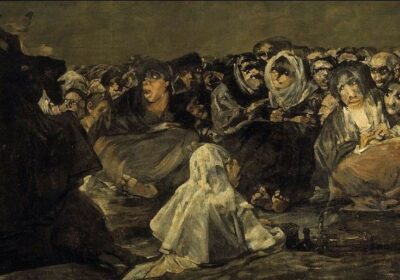
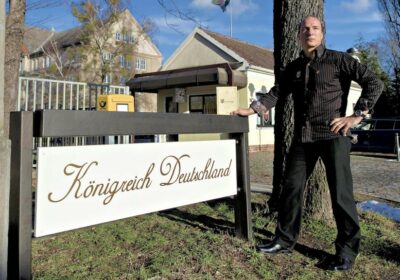
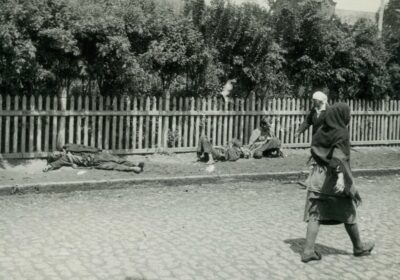
Leave a Reply